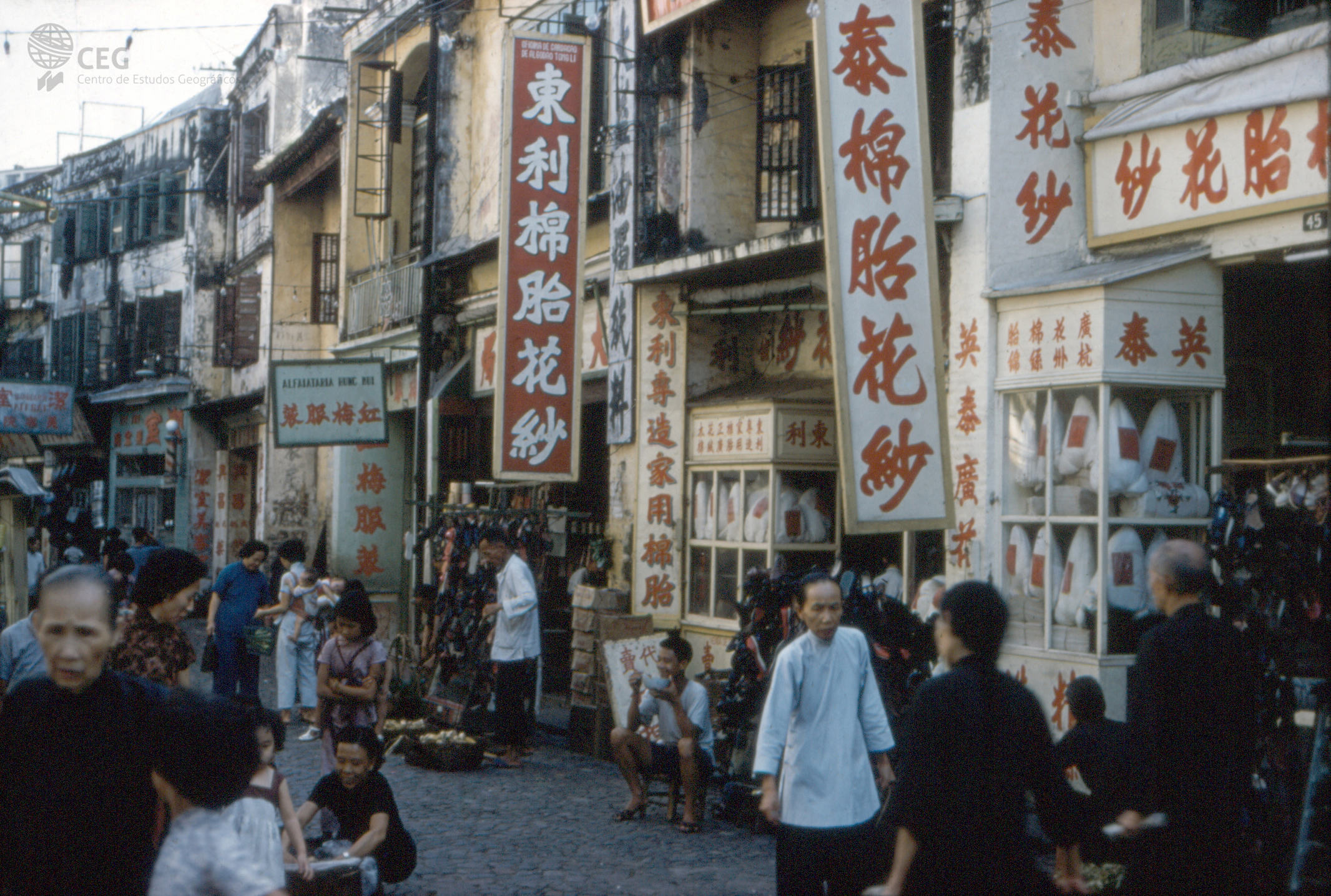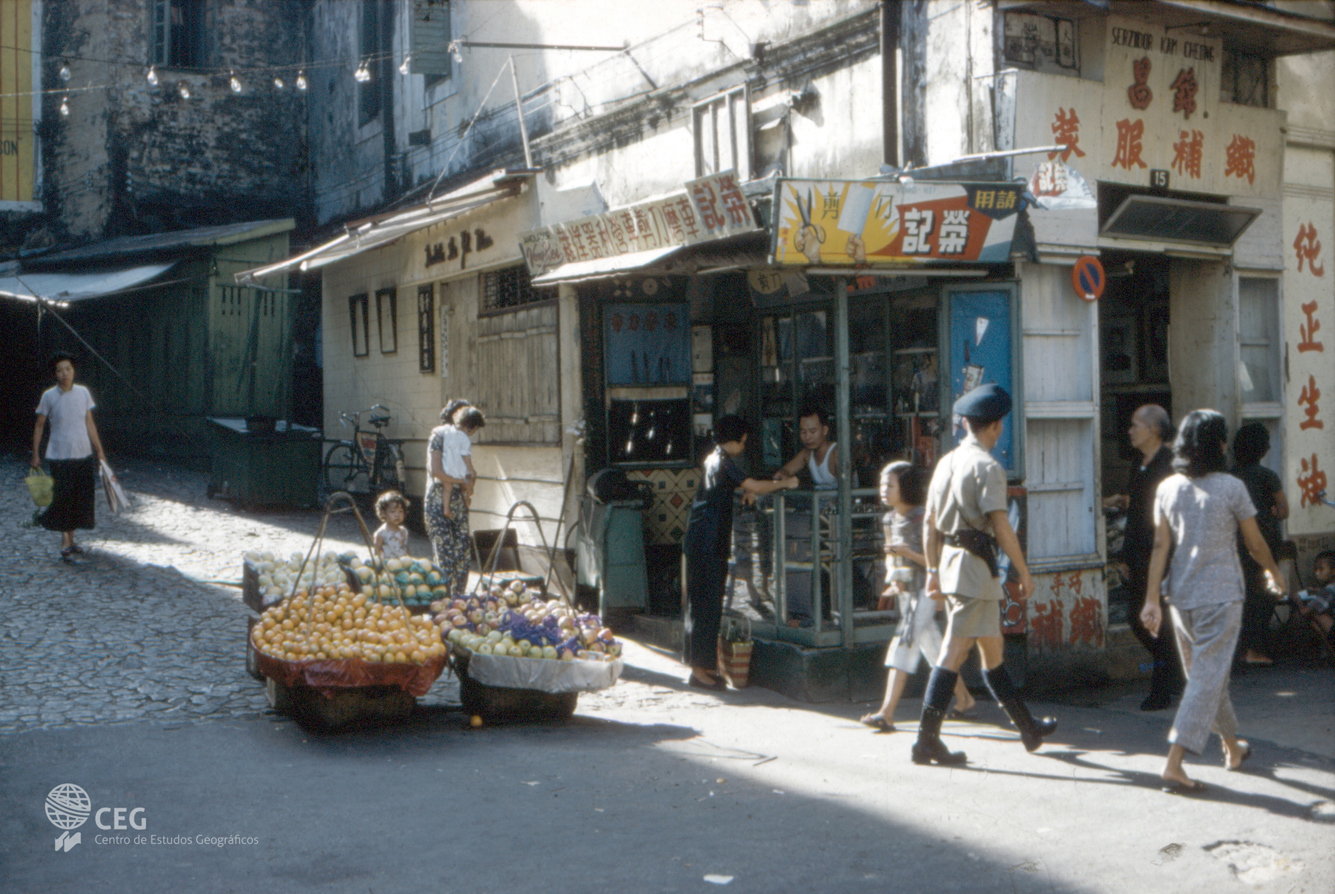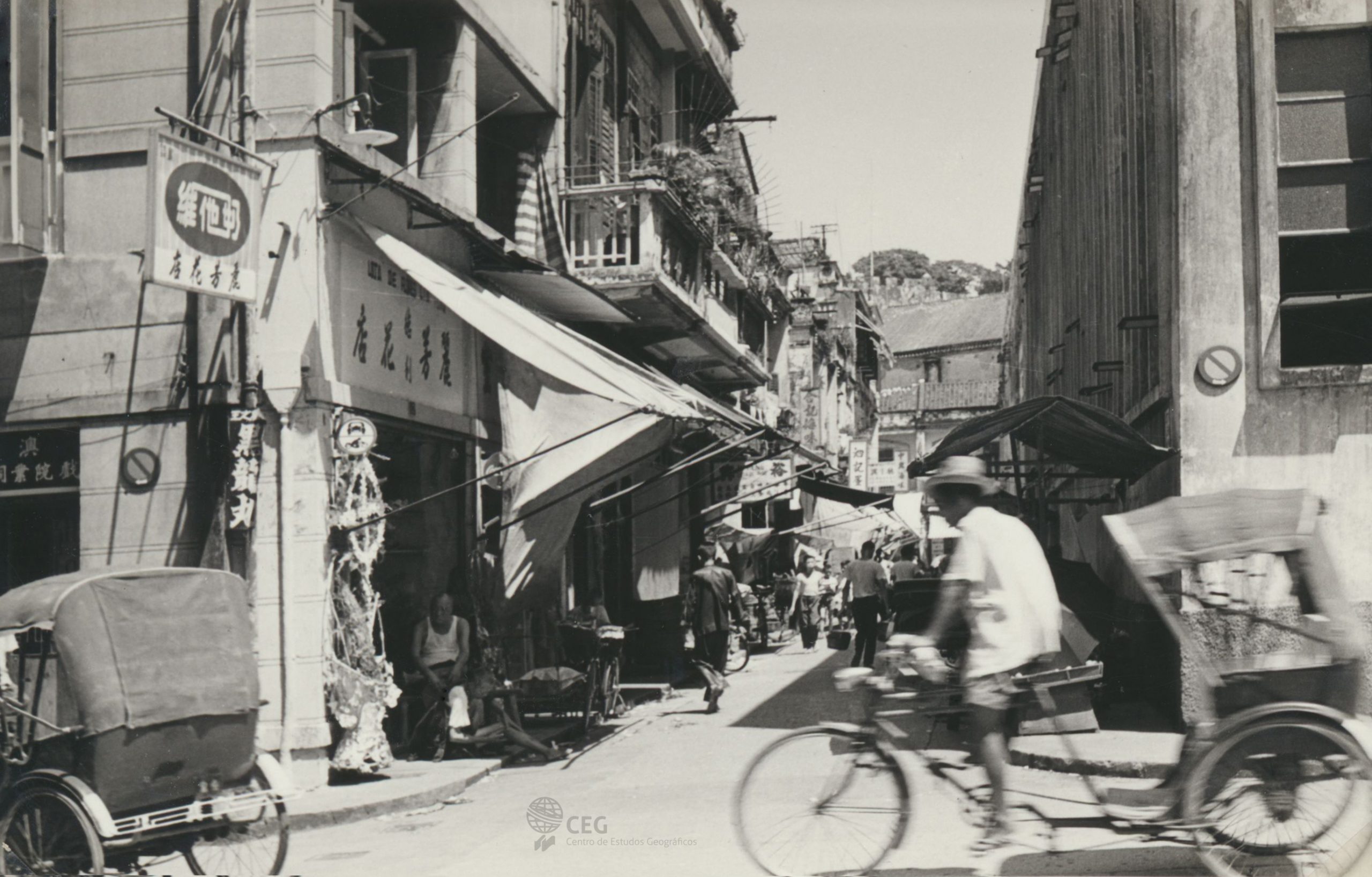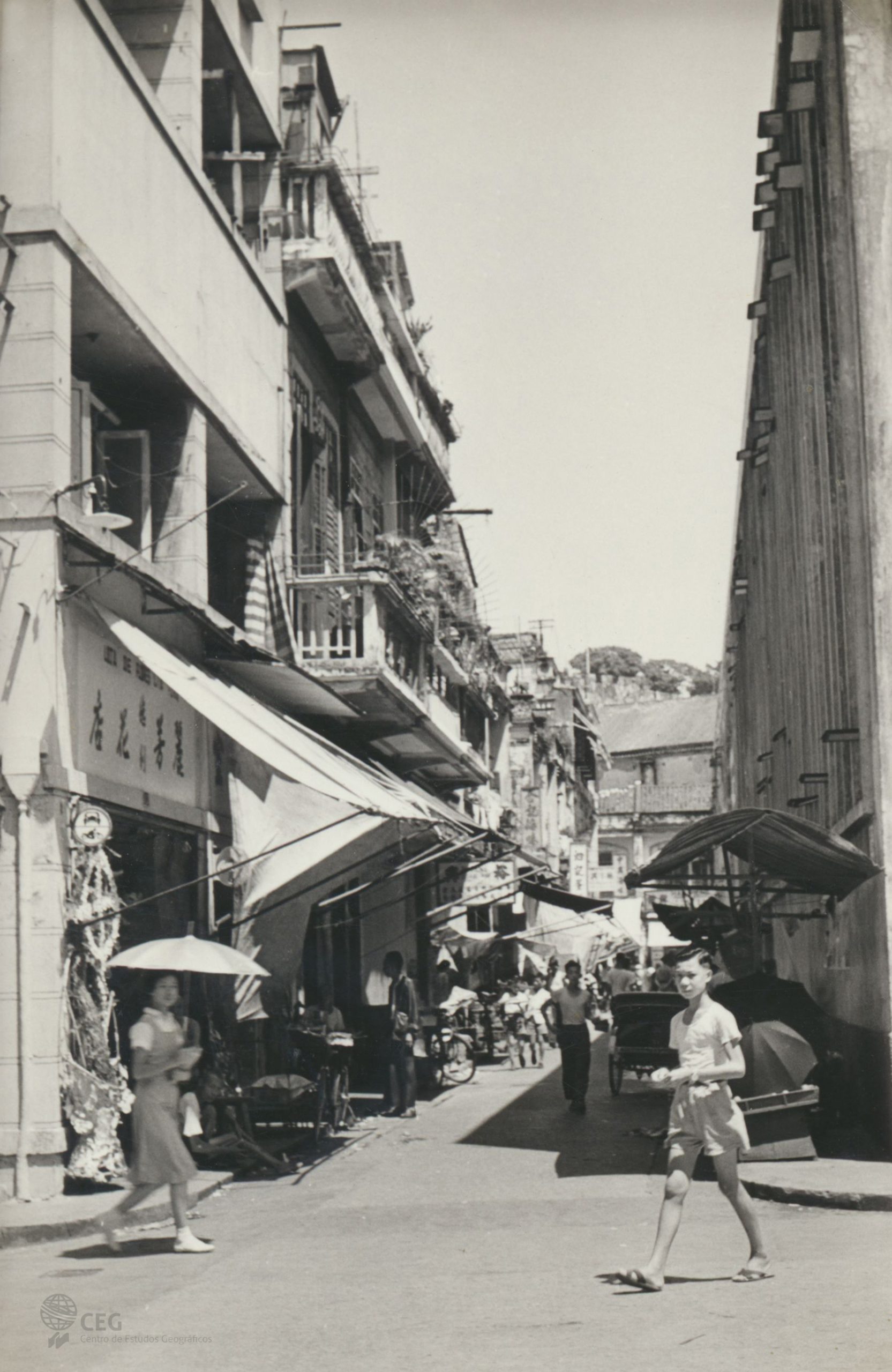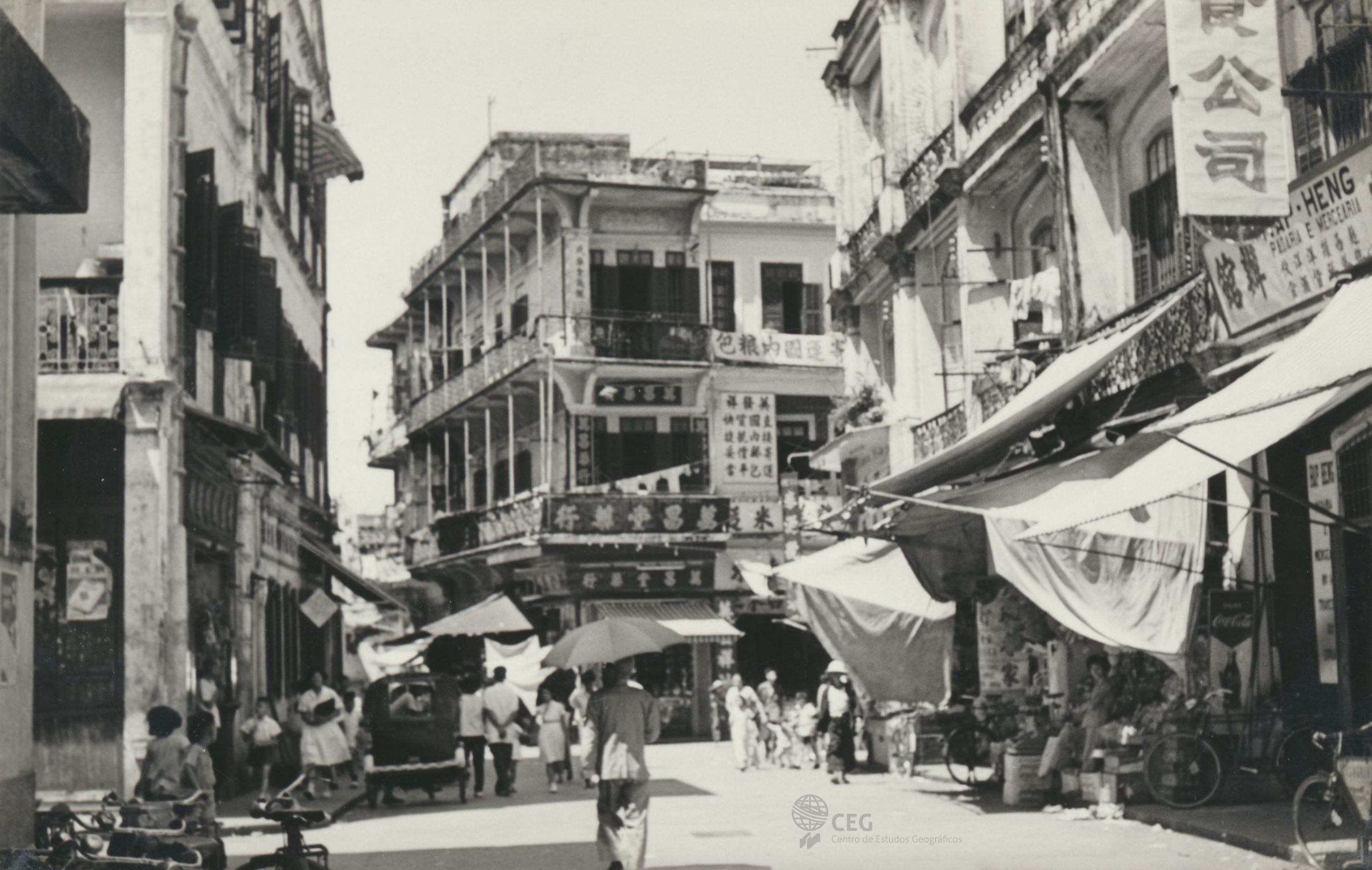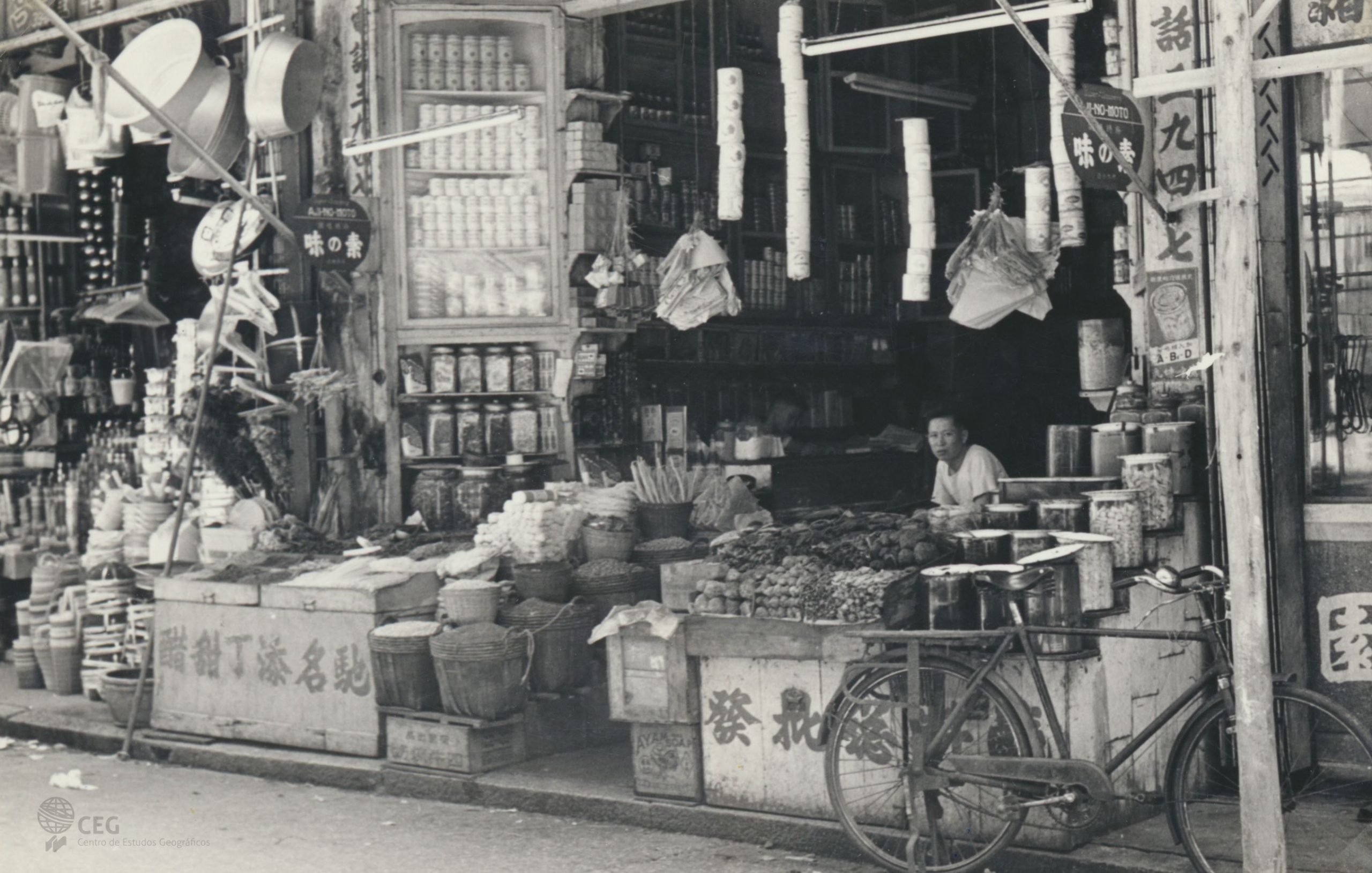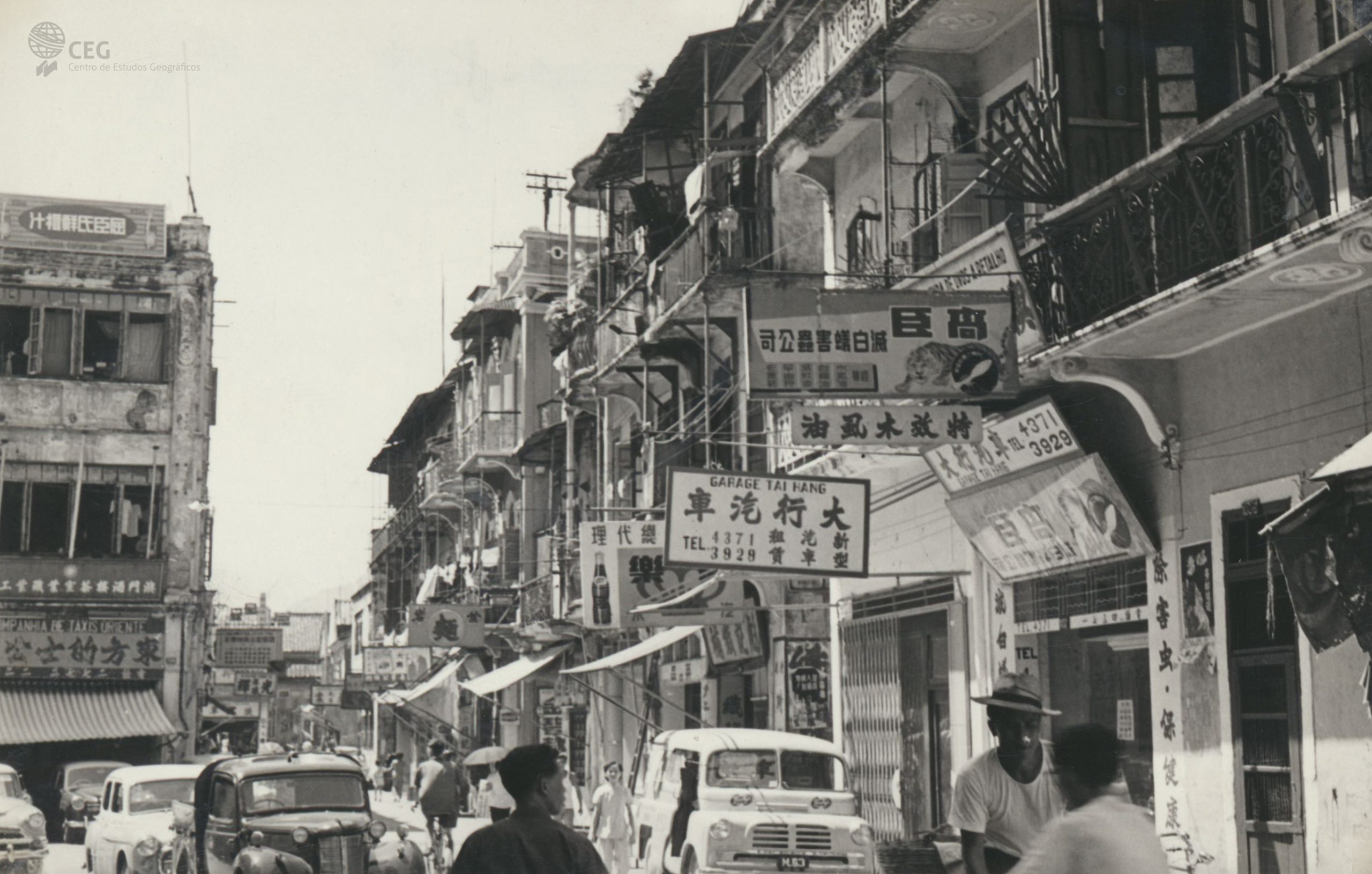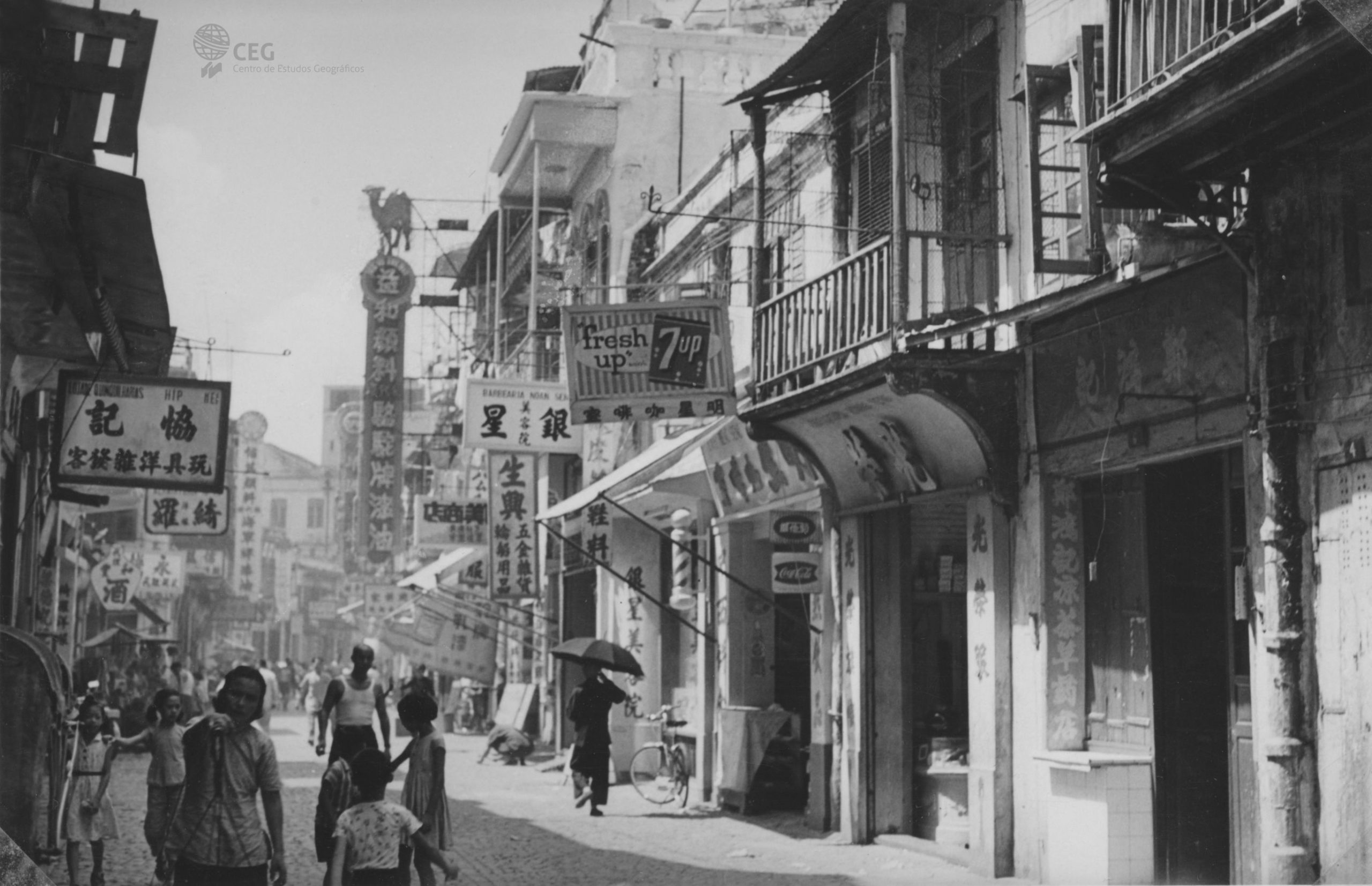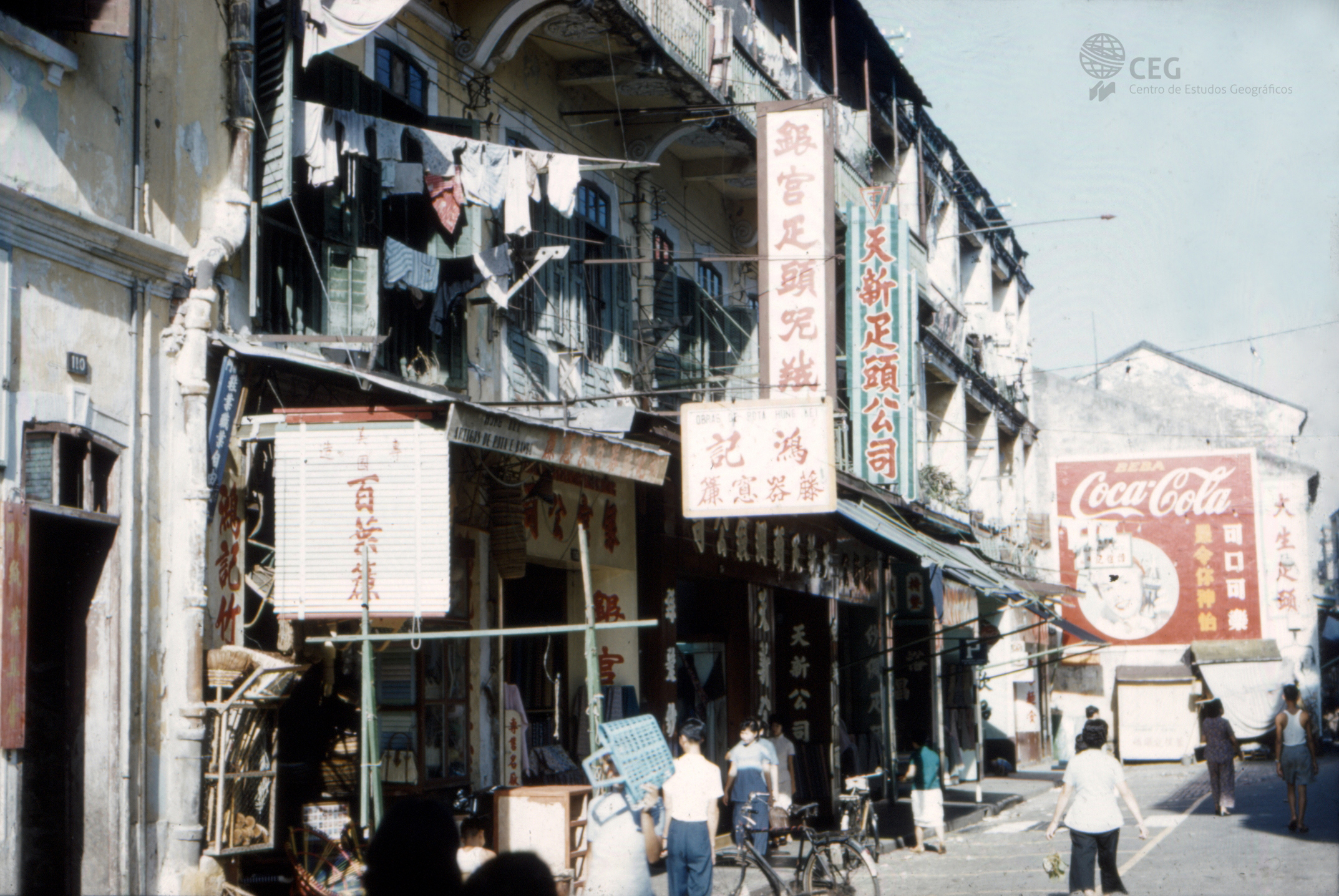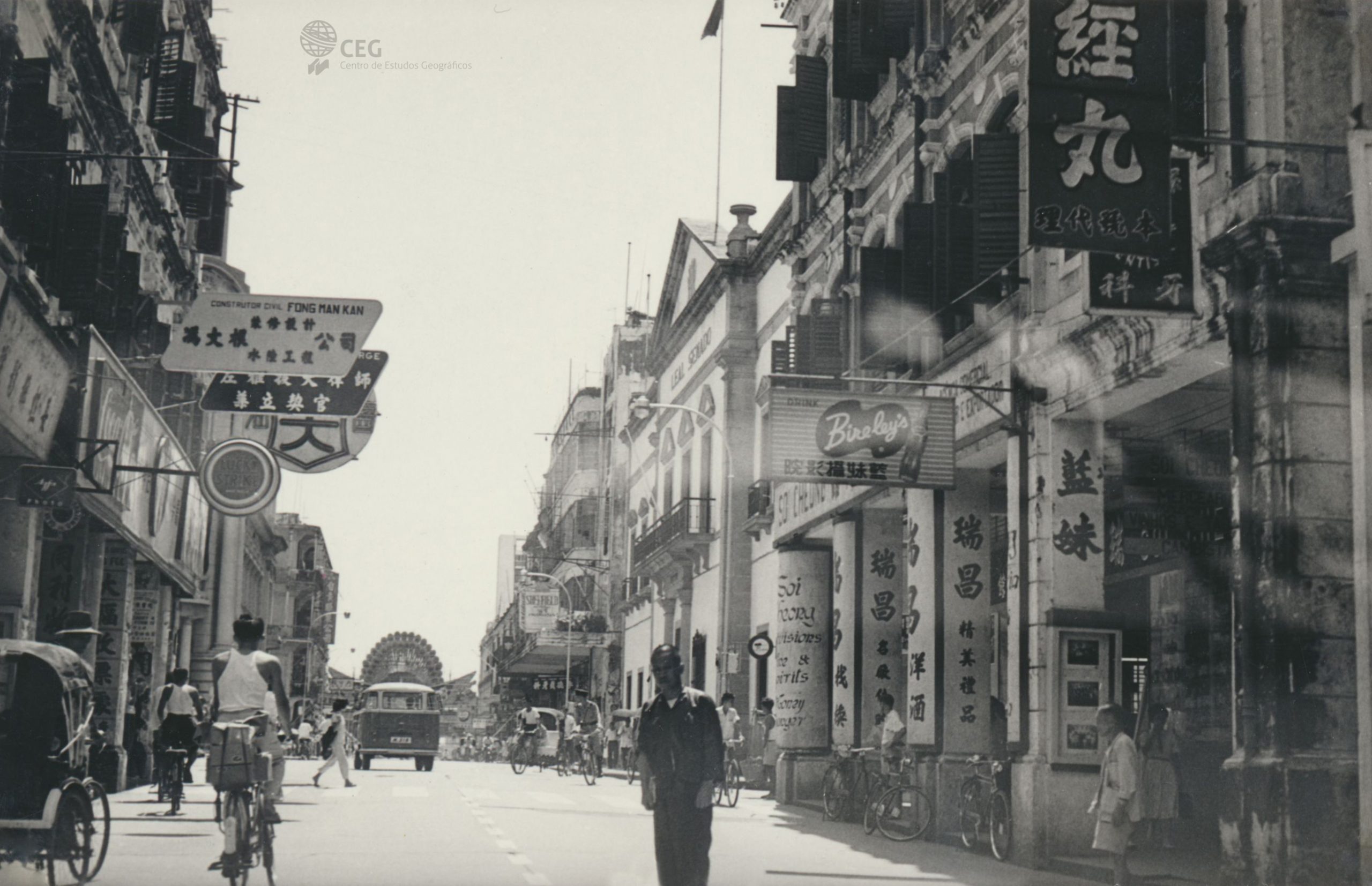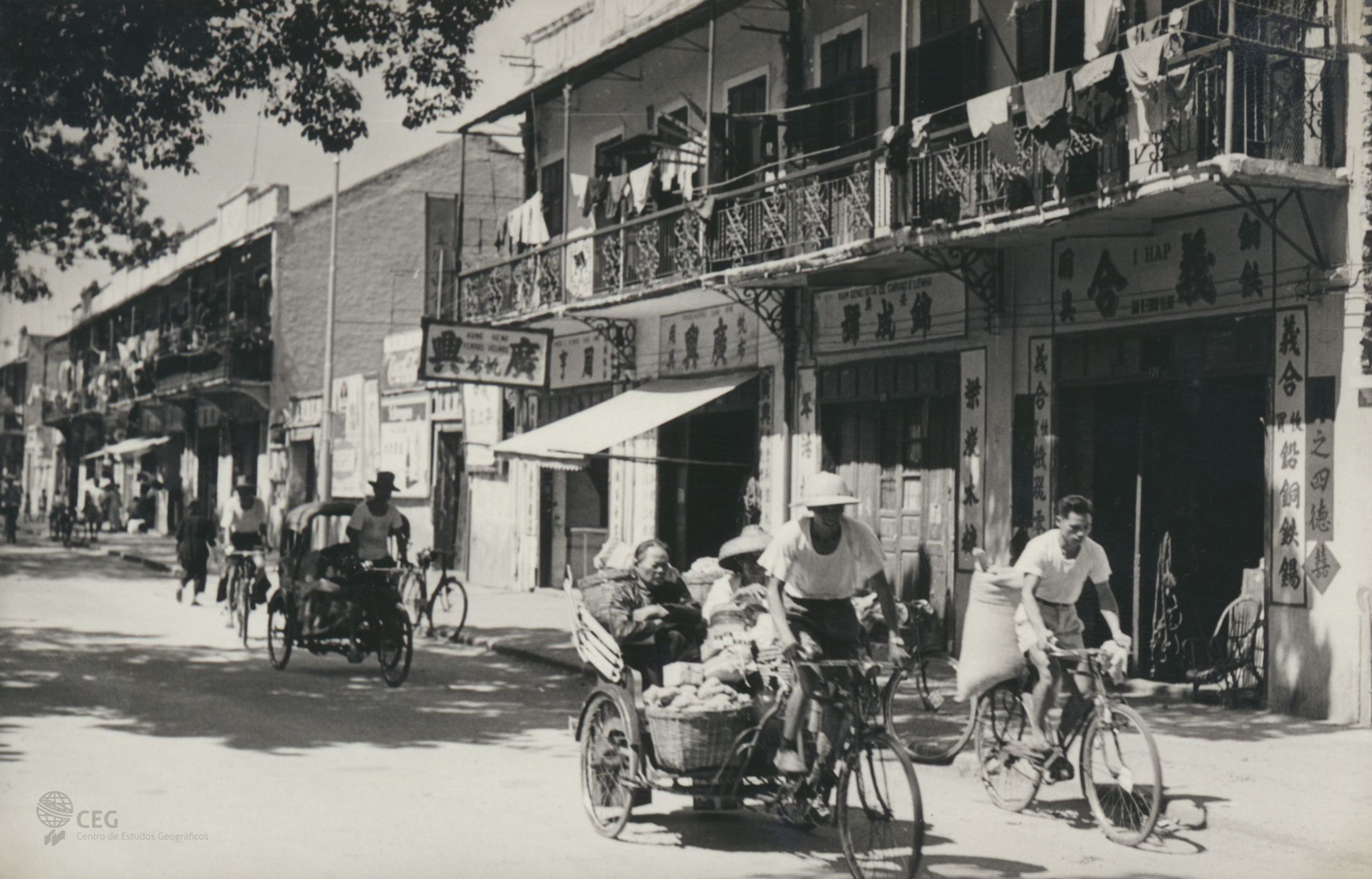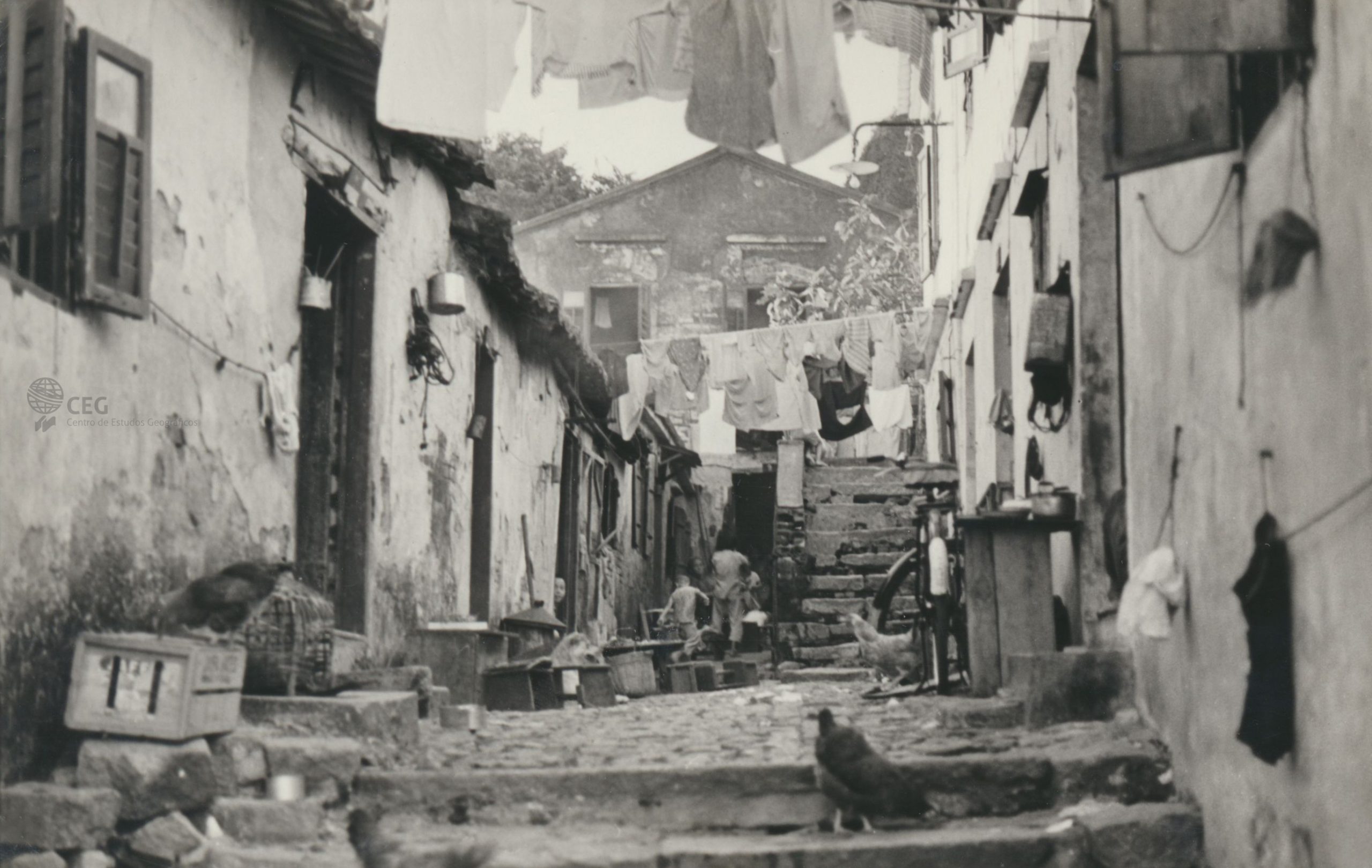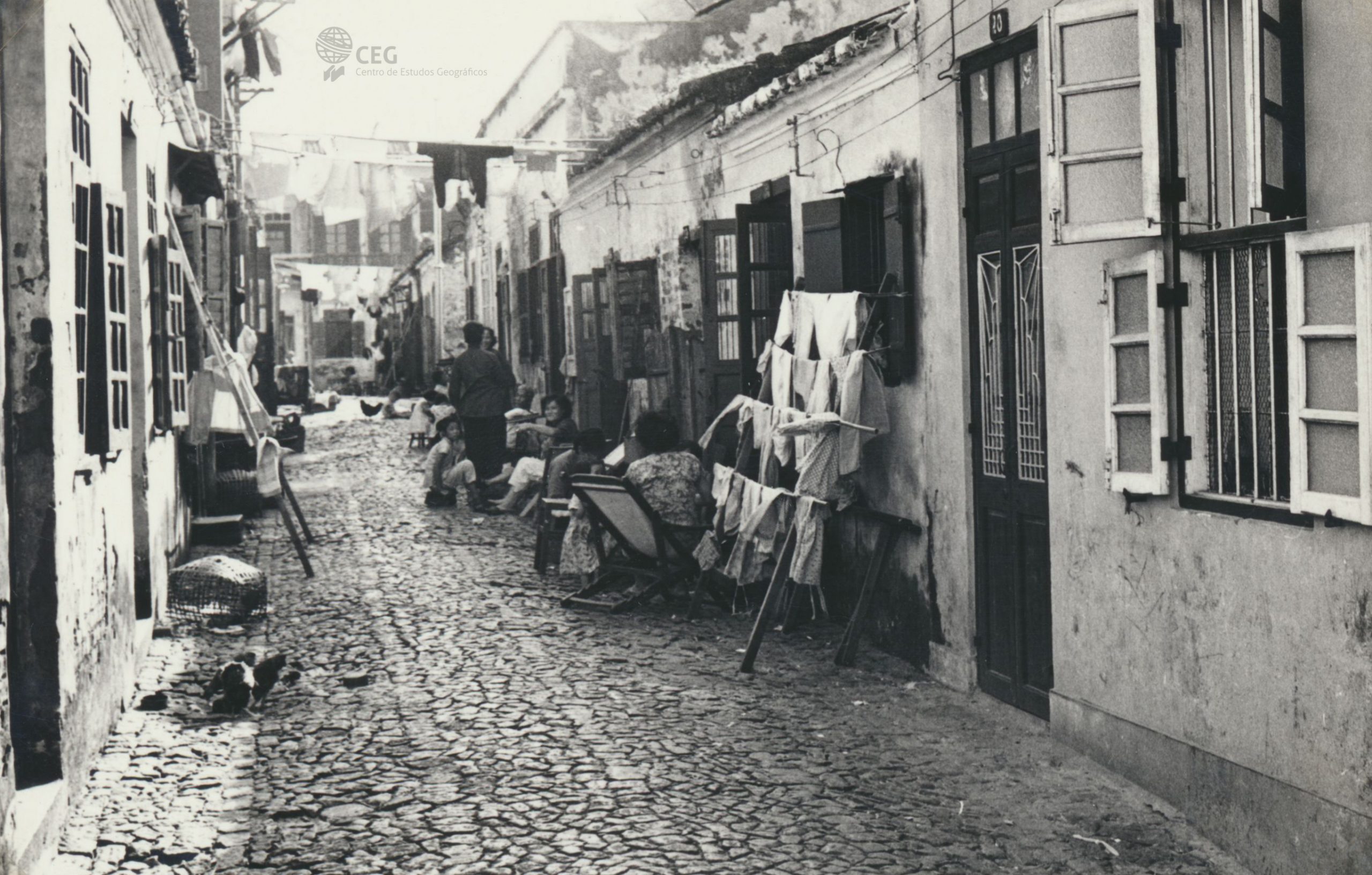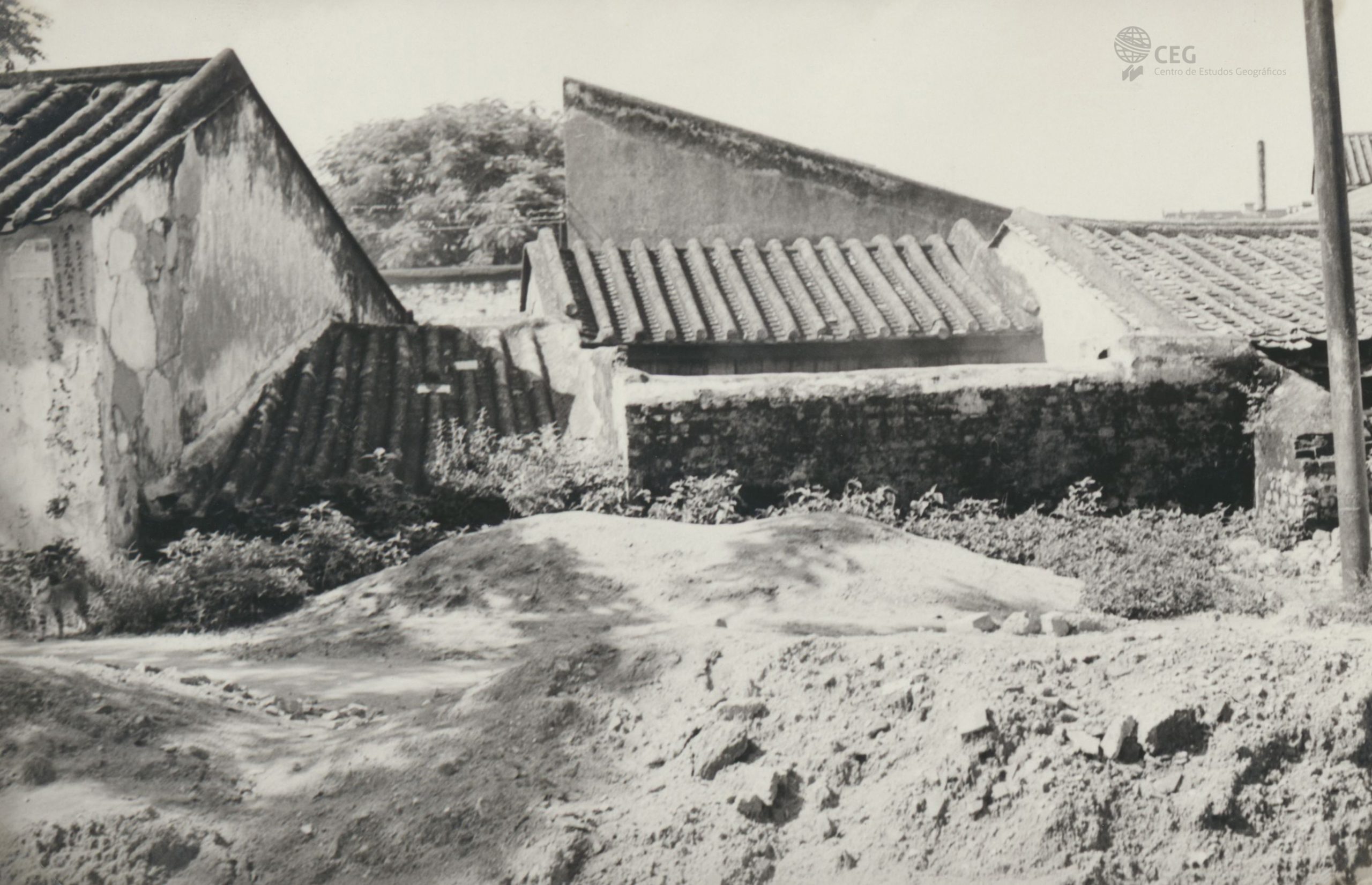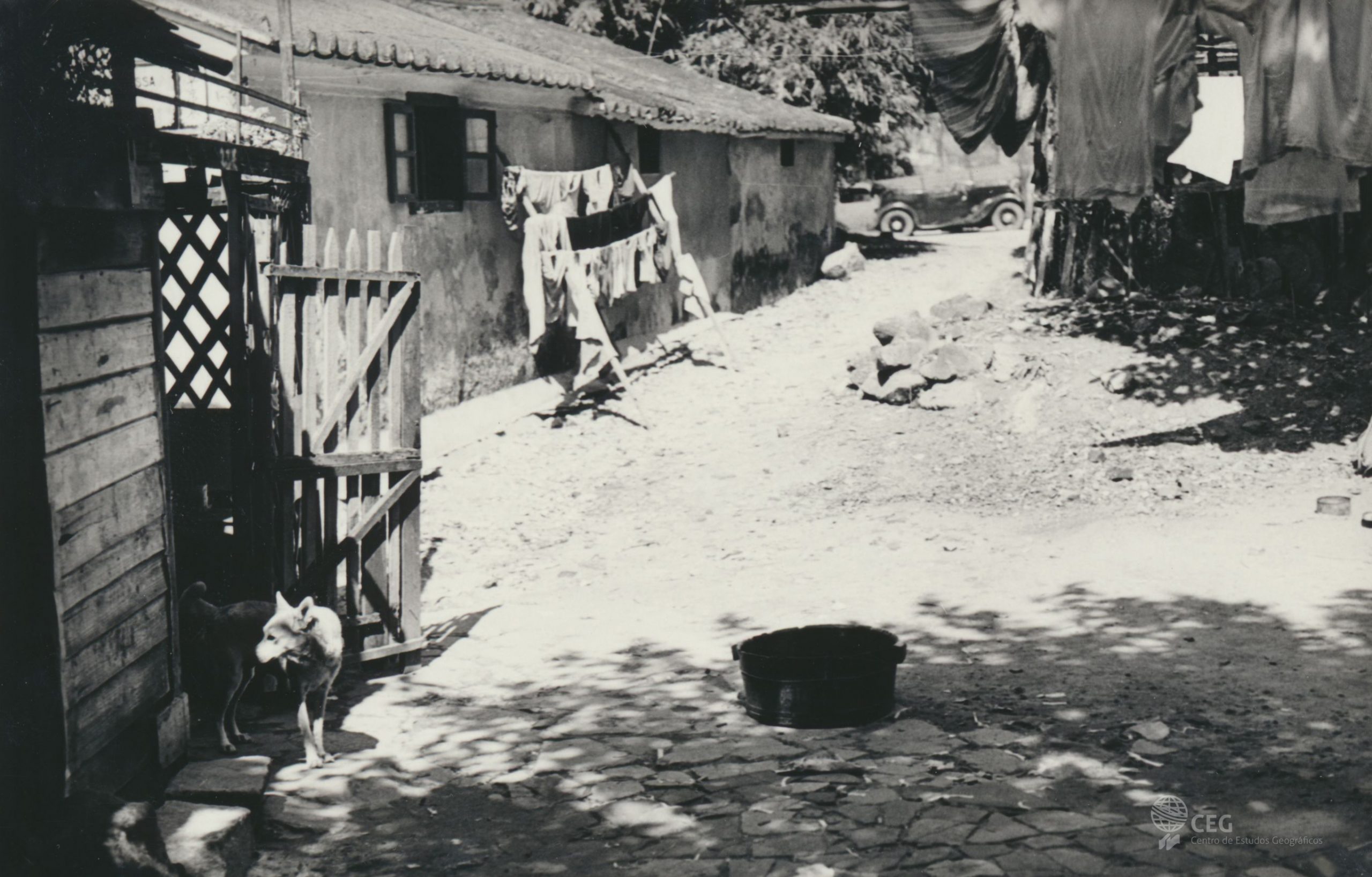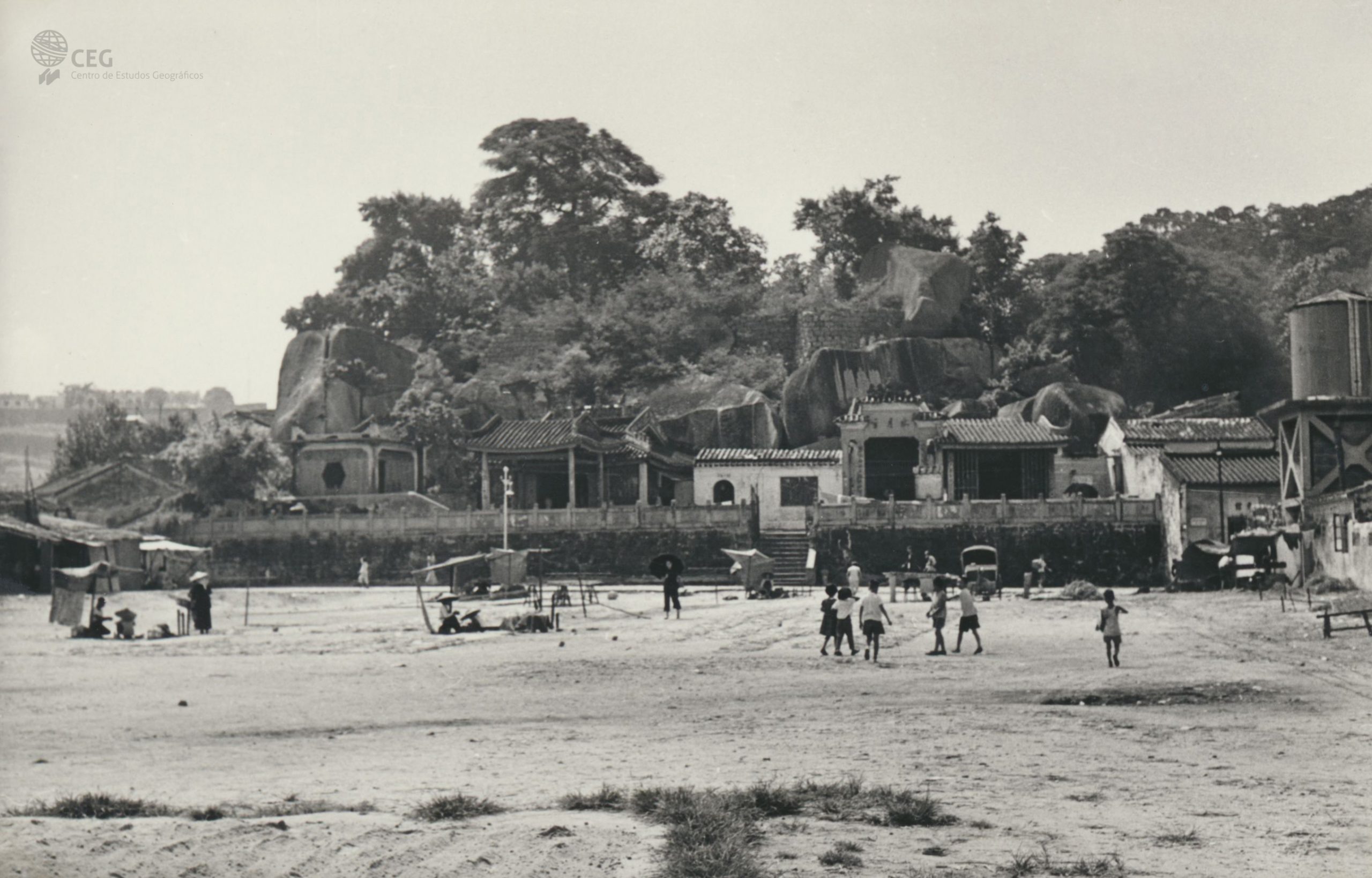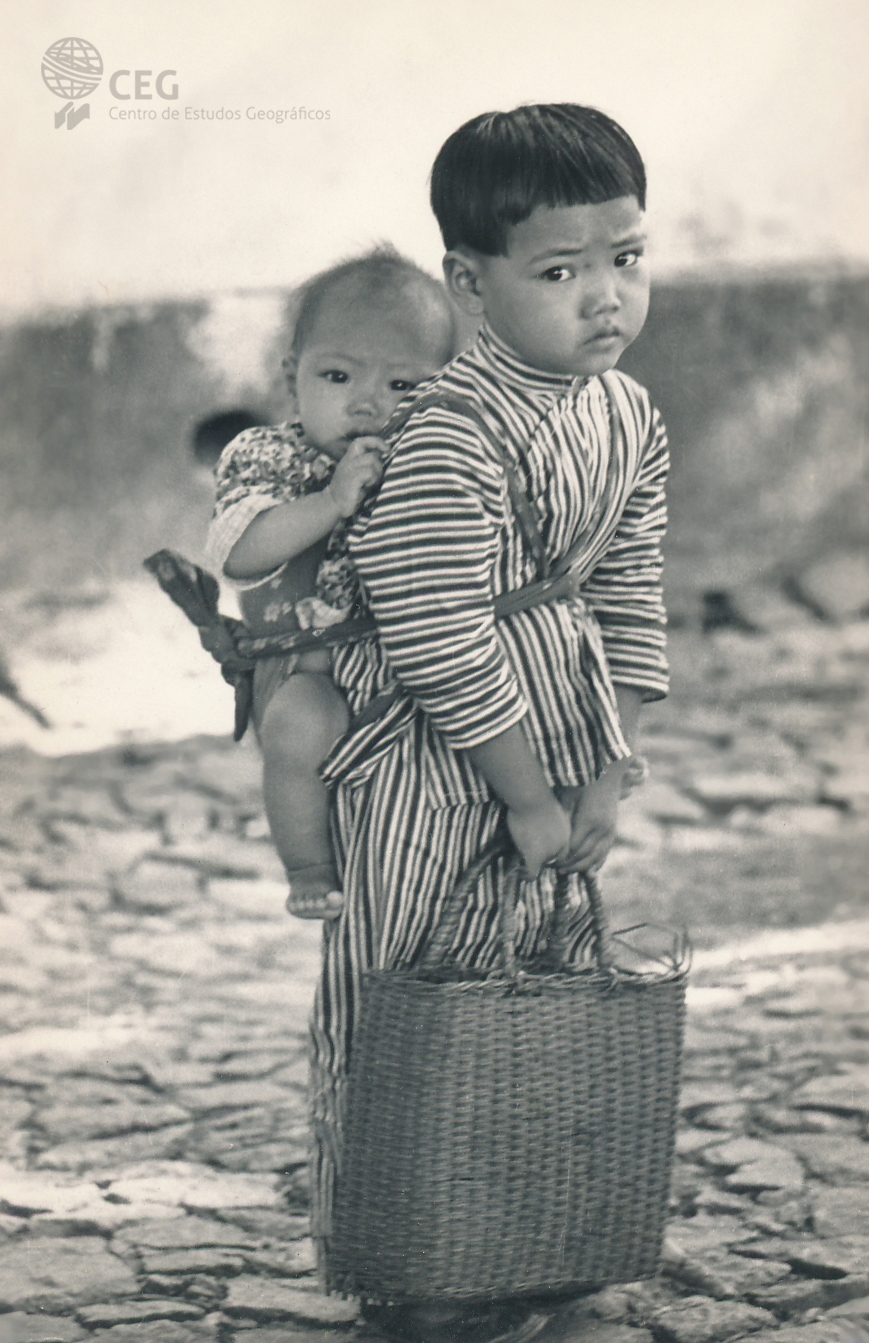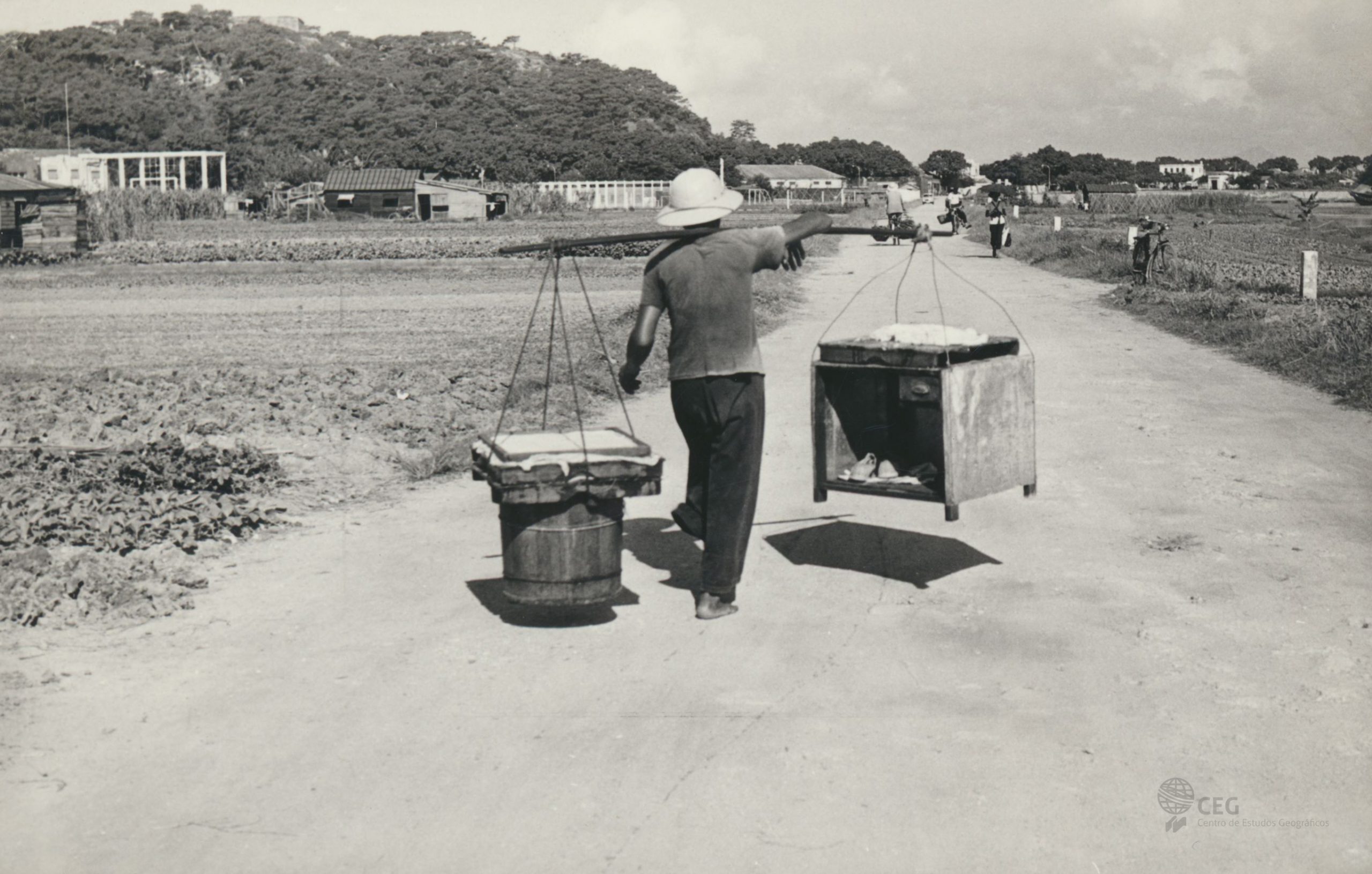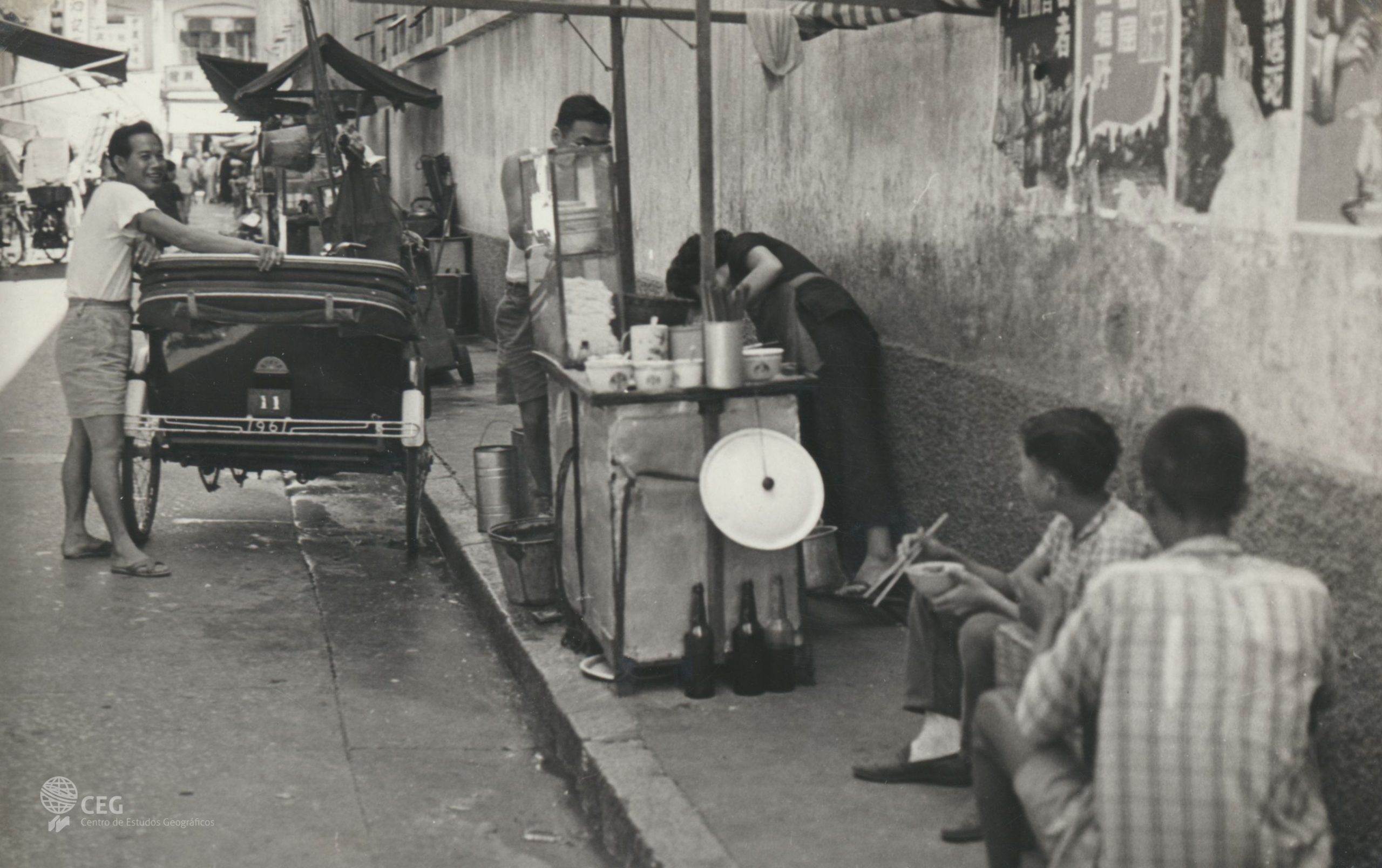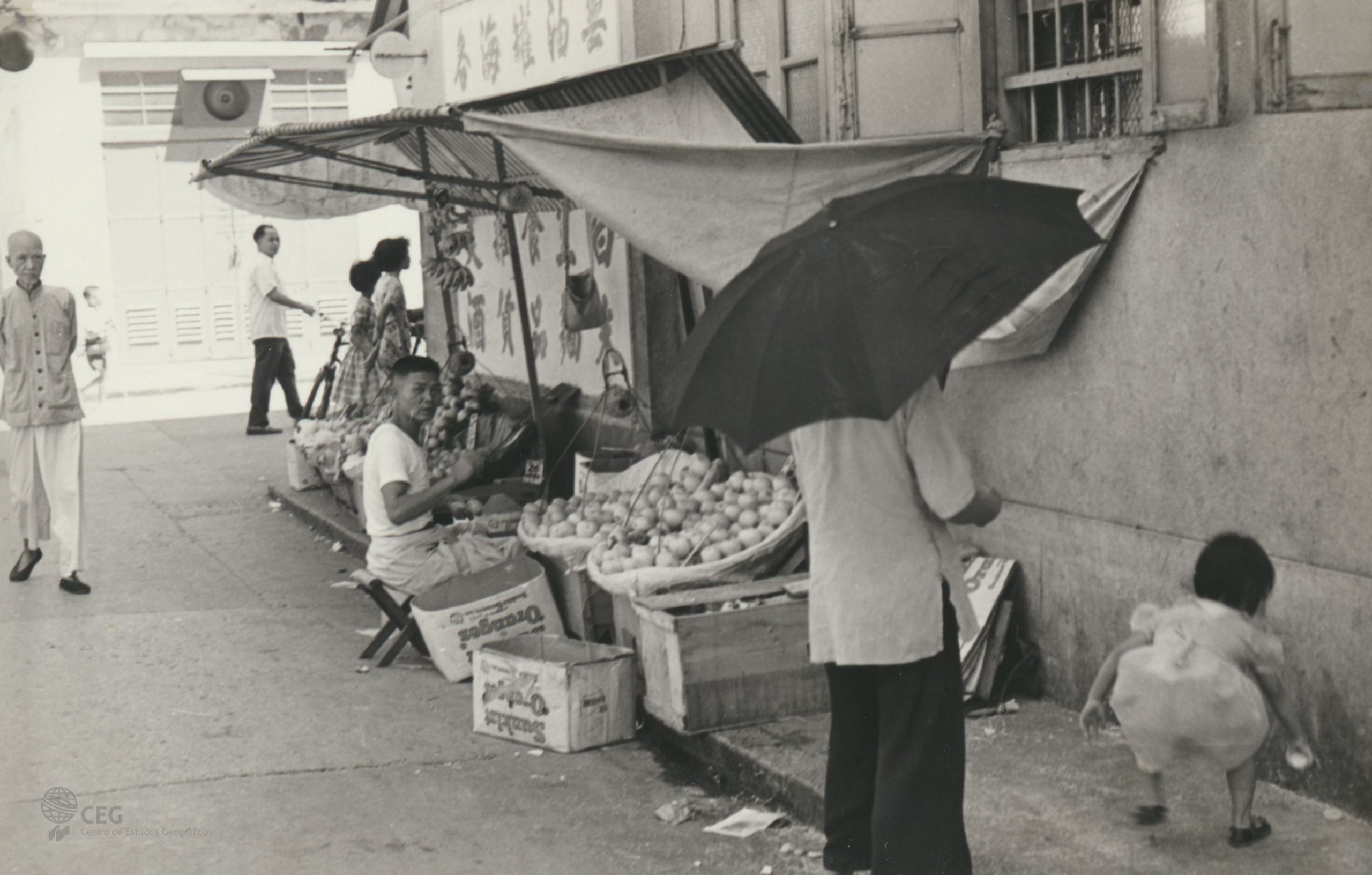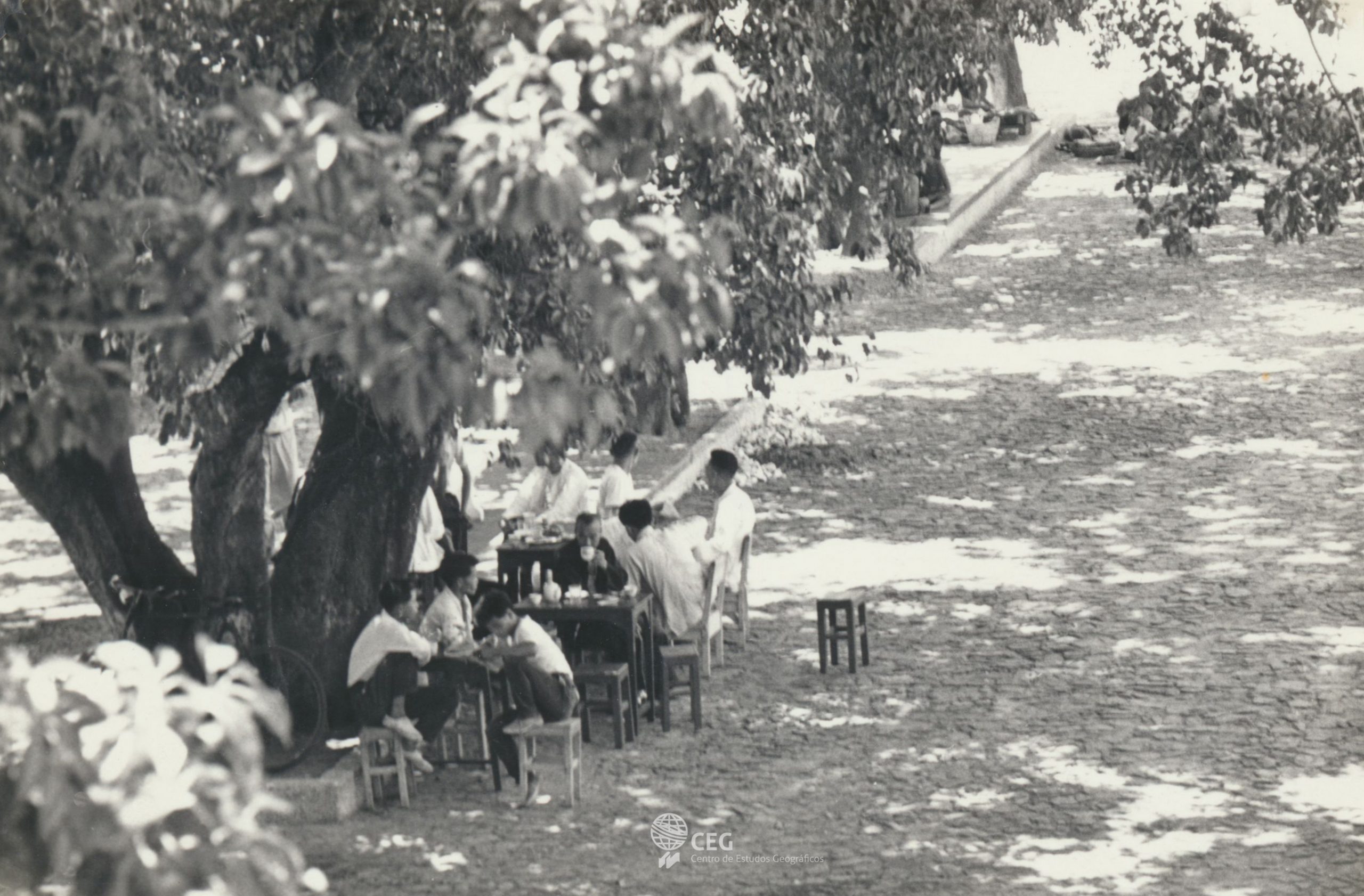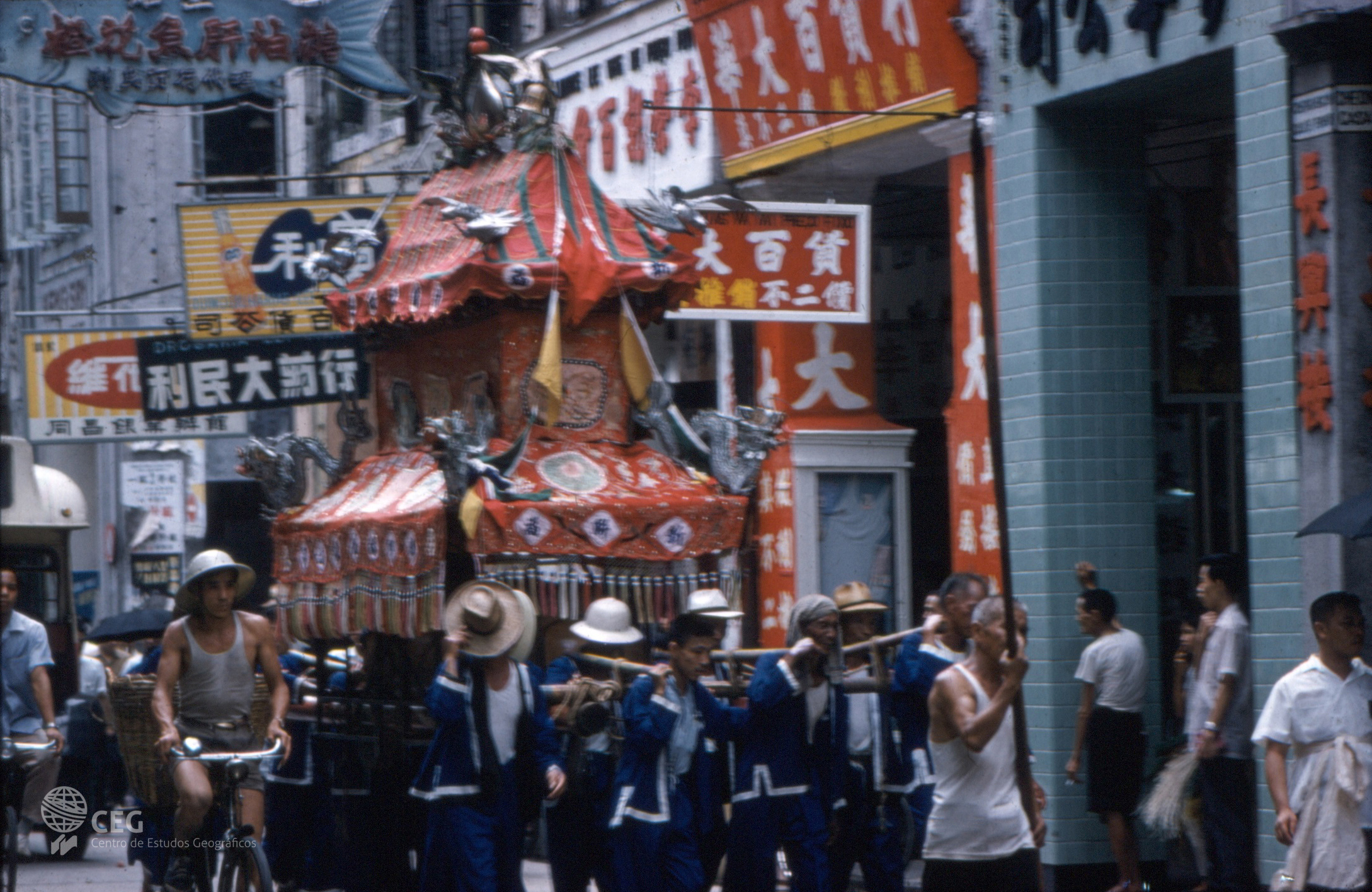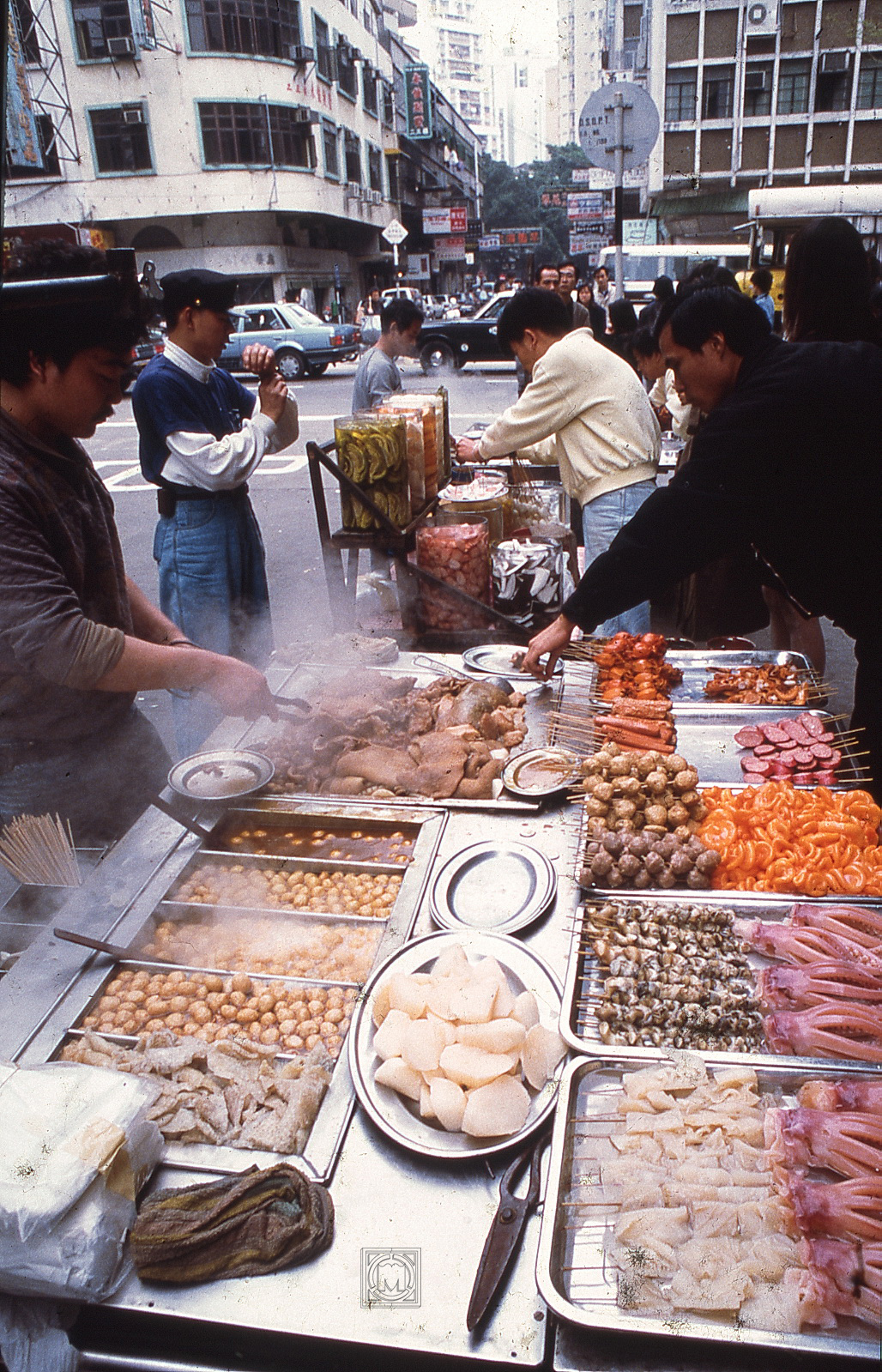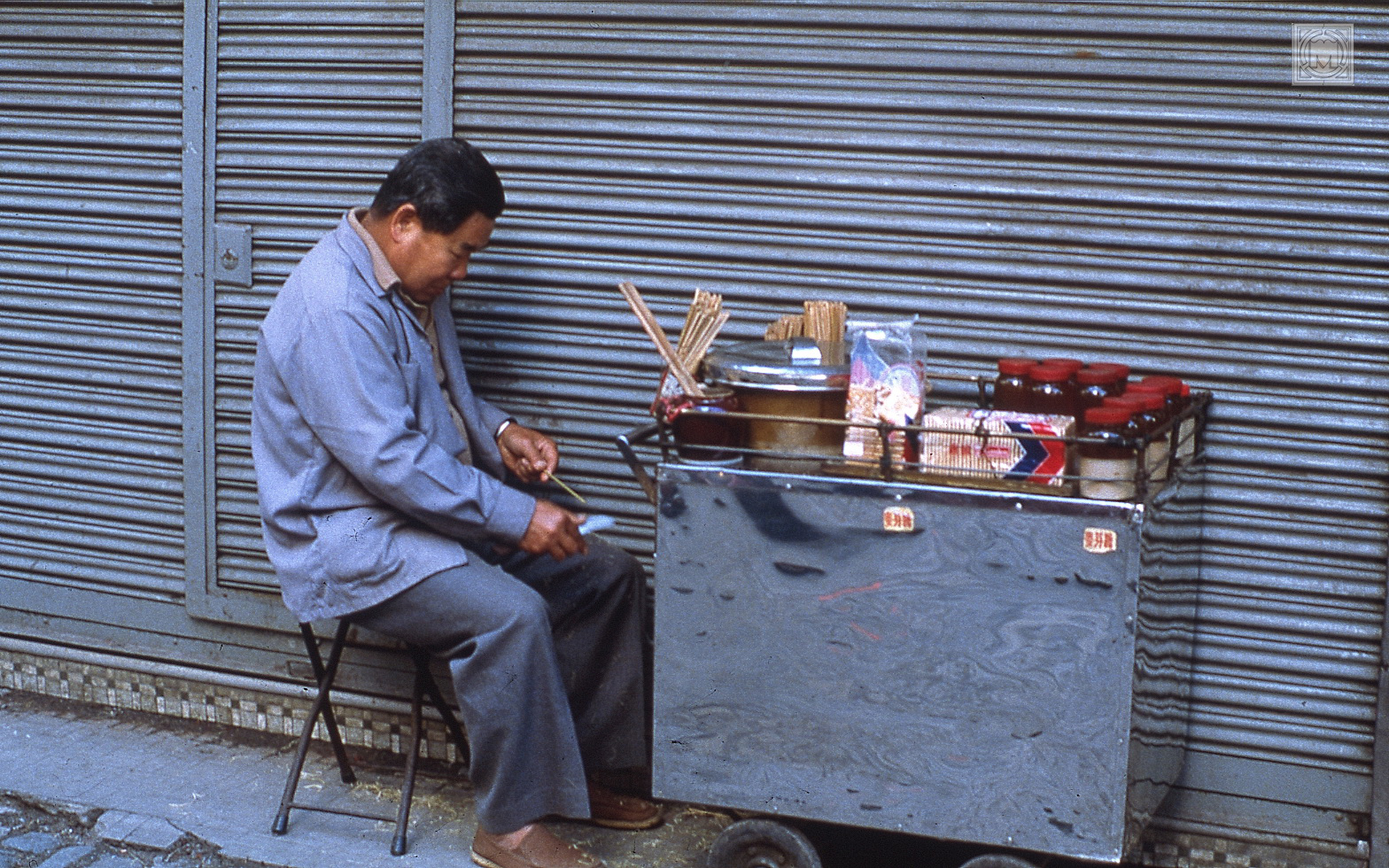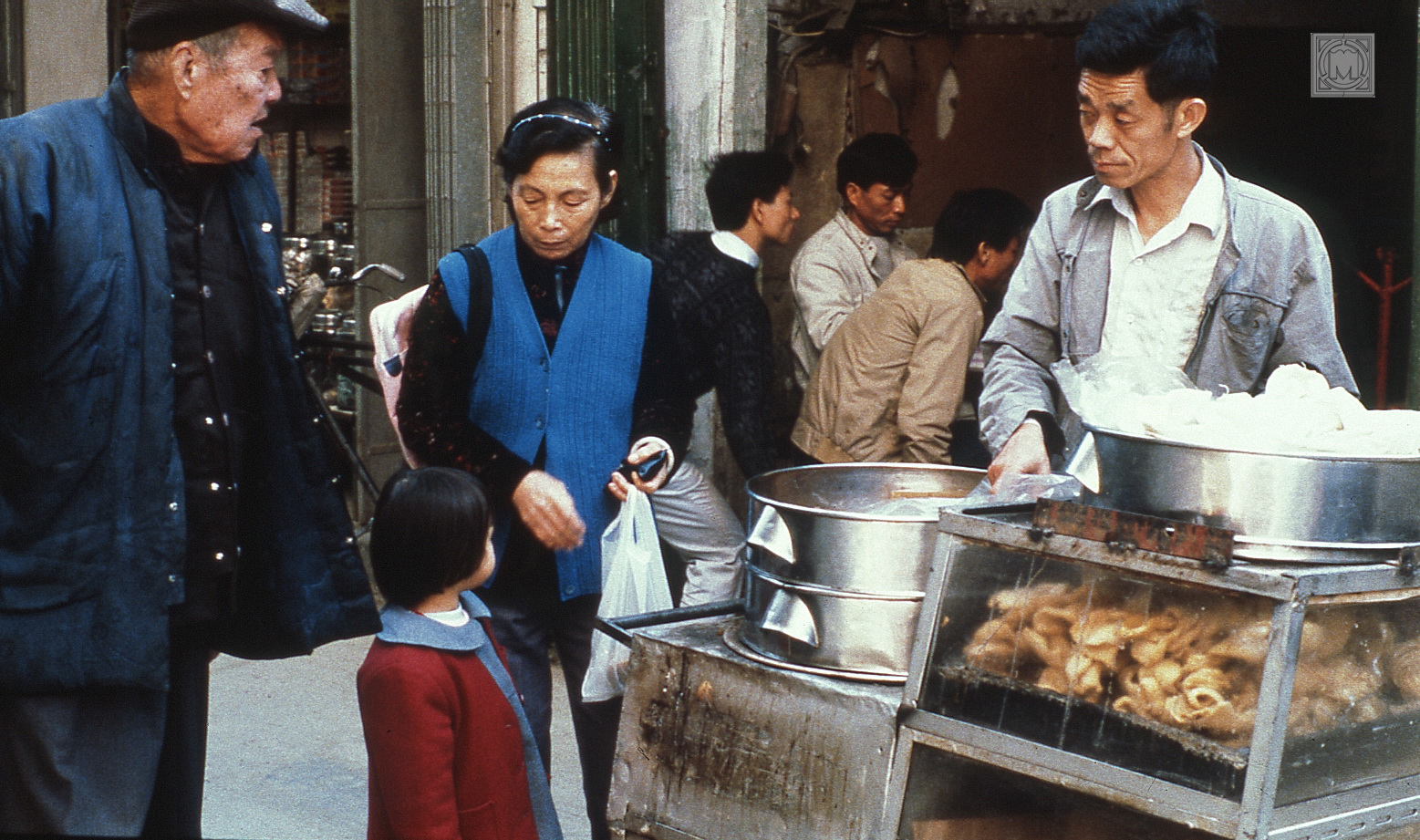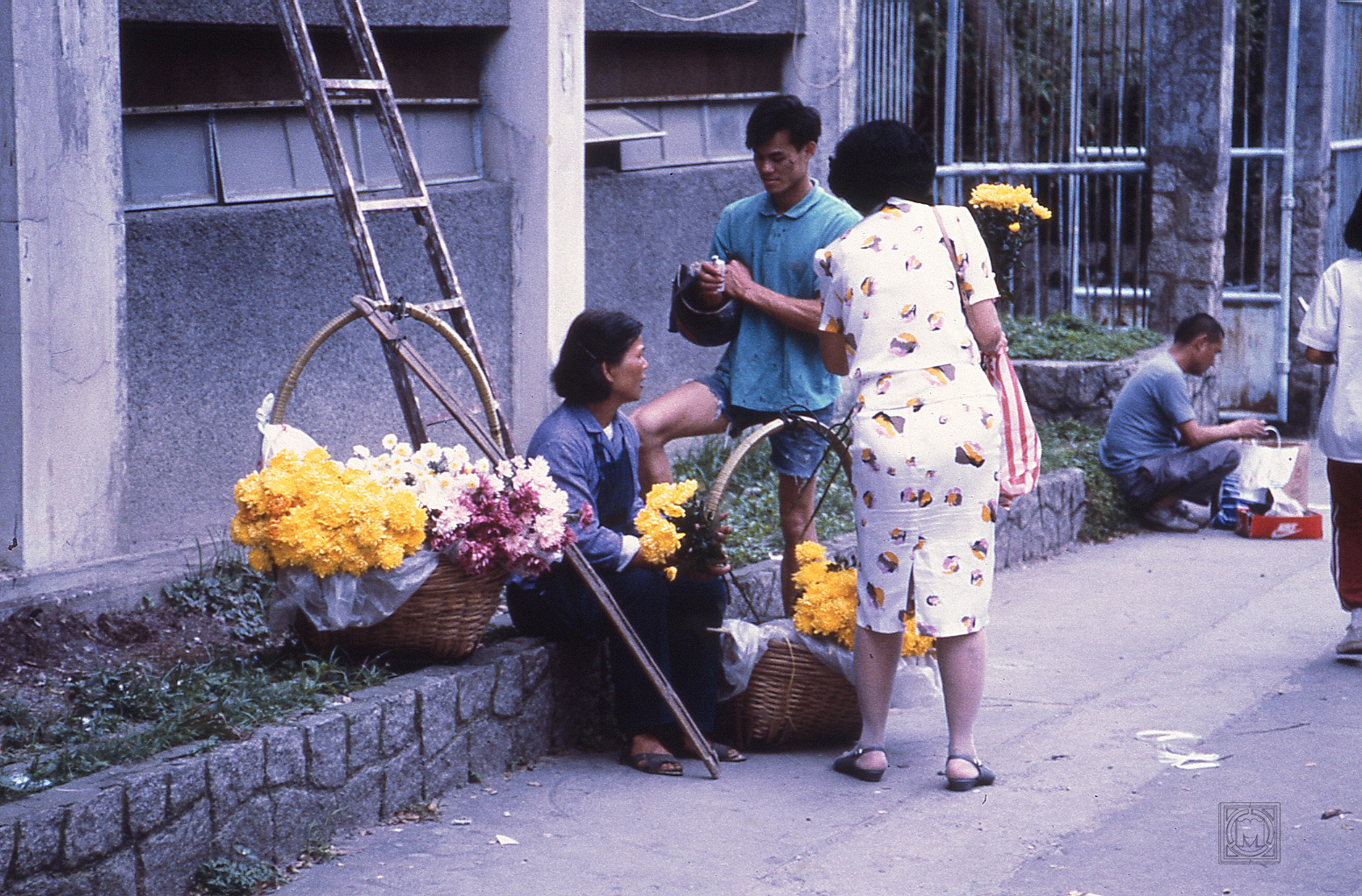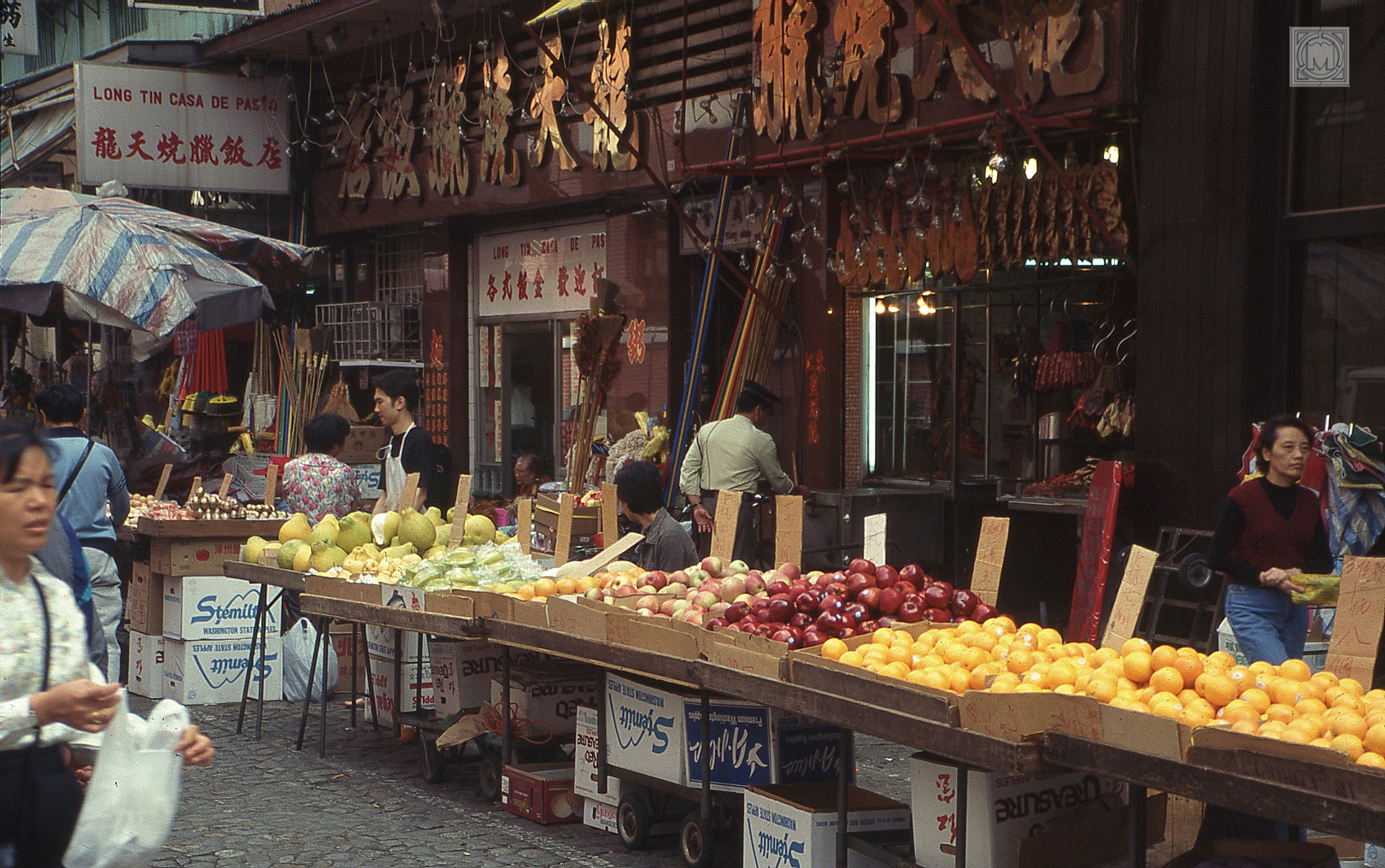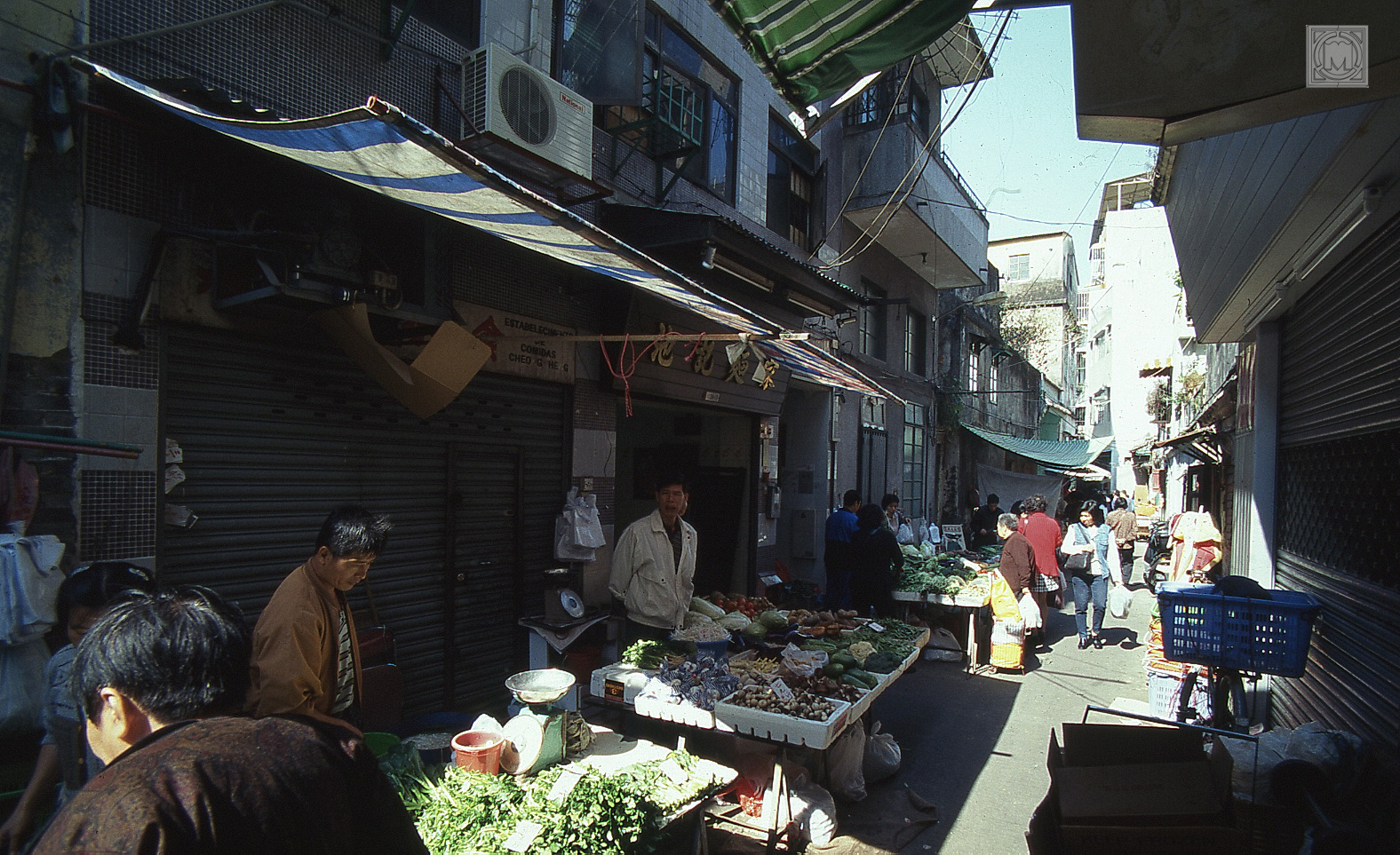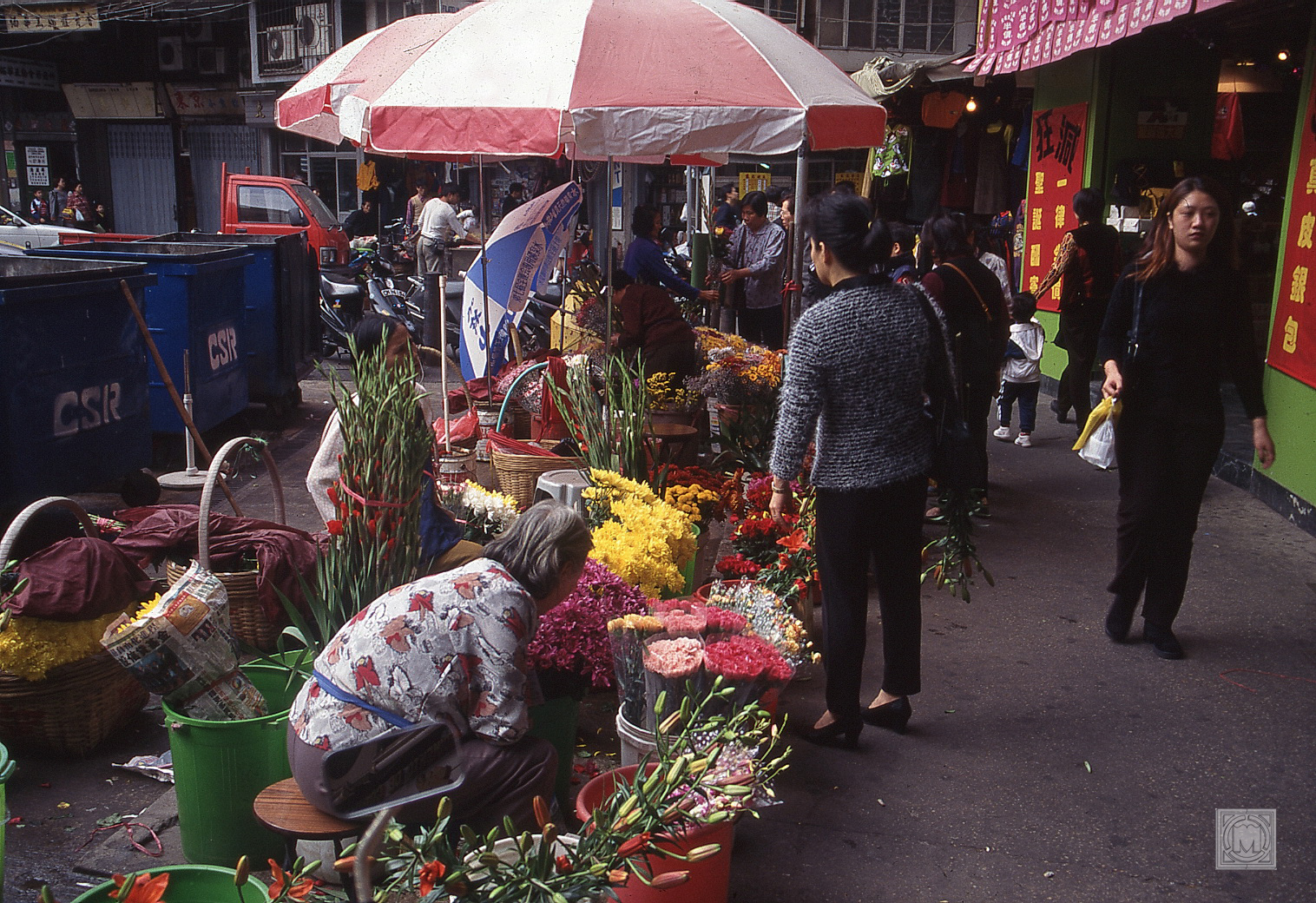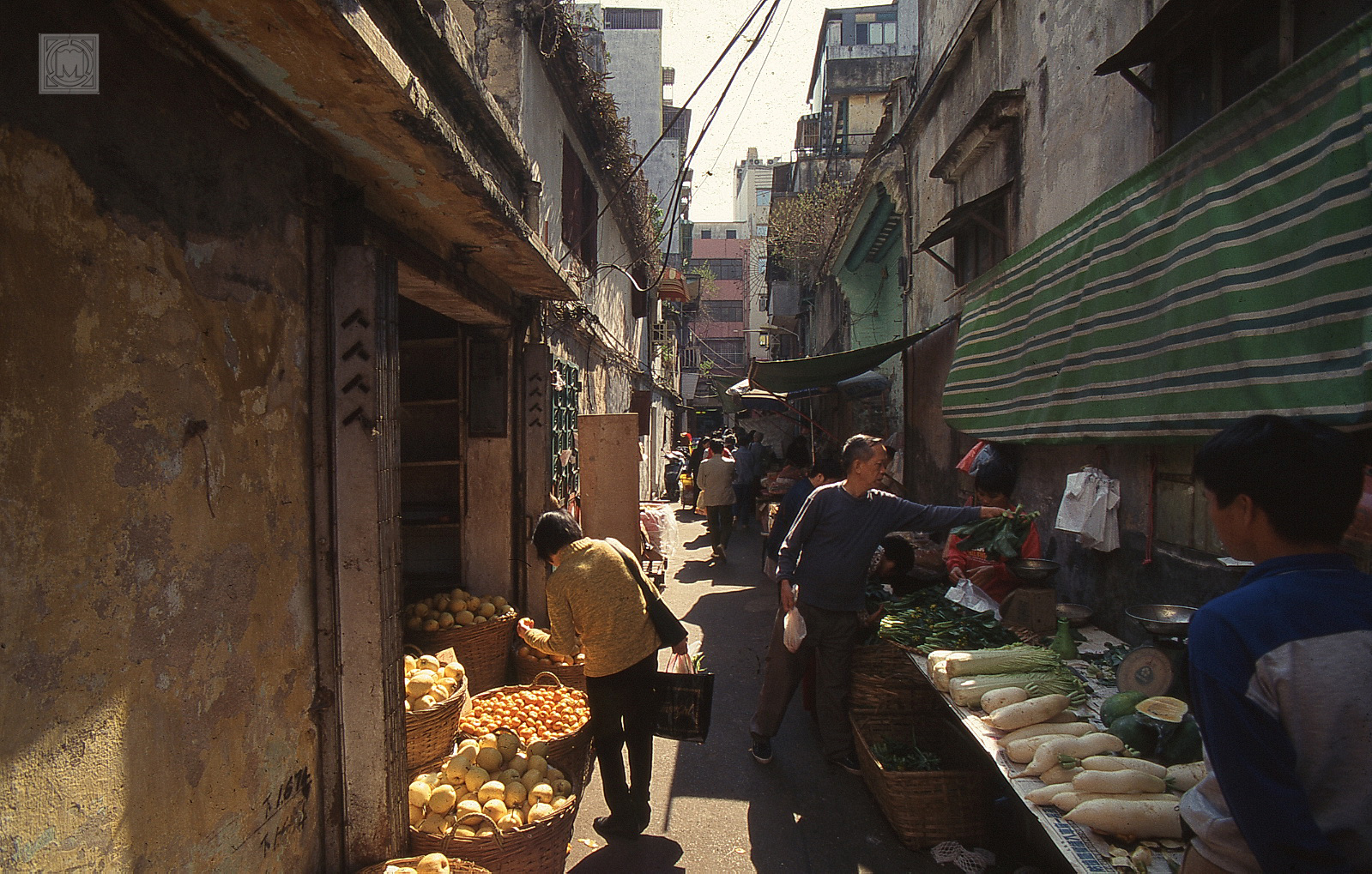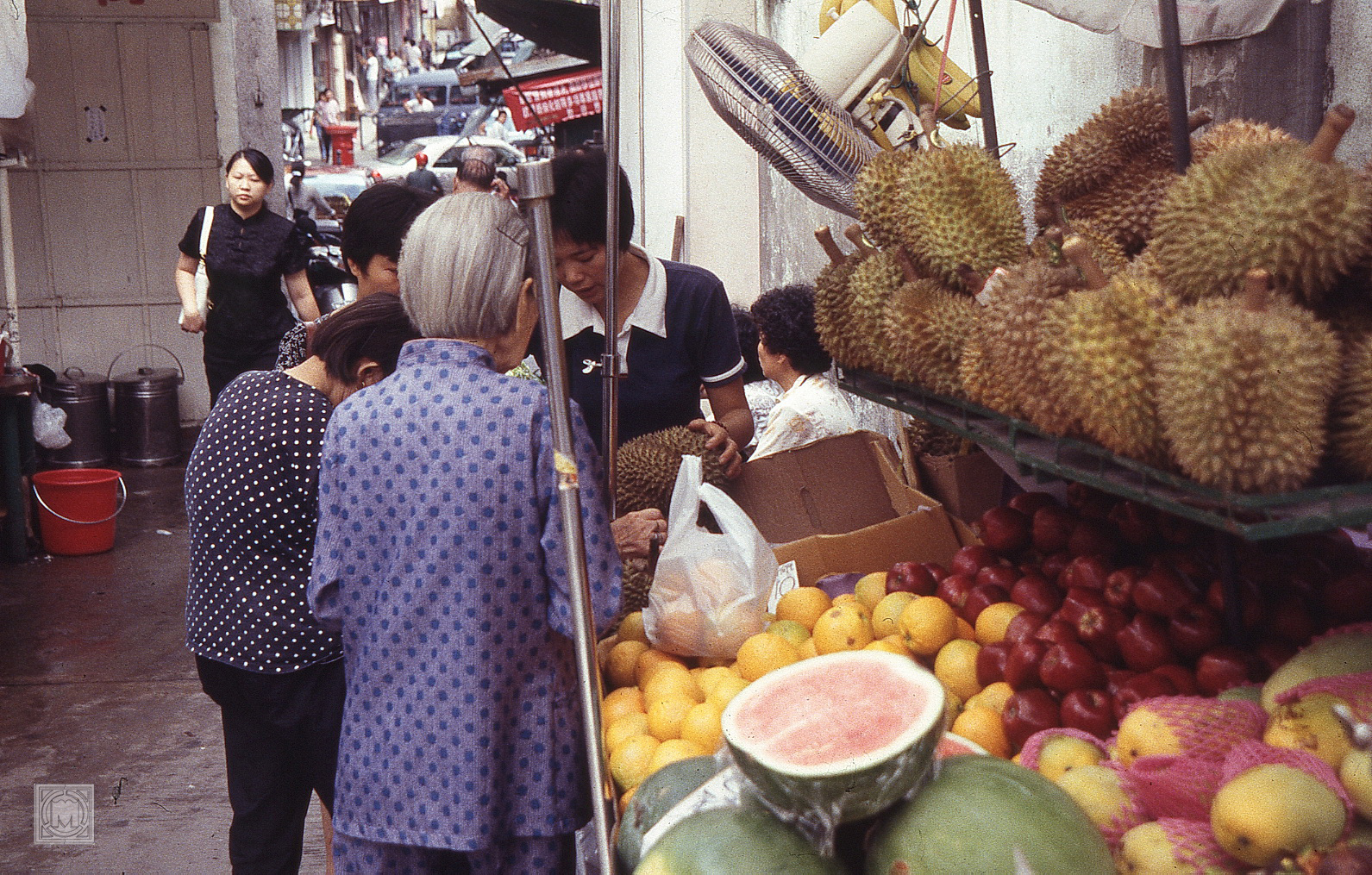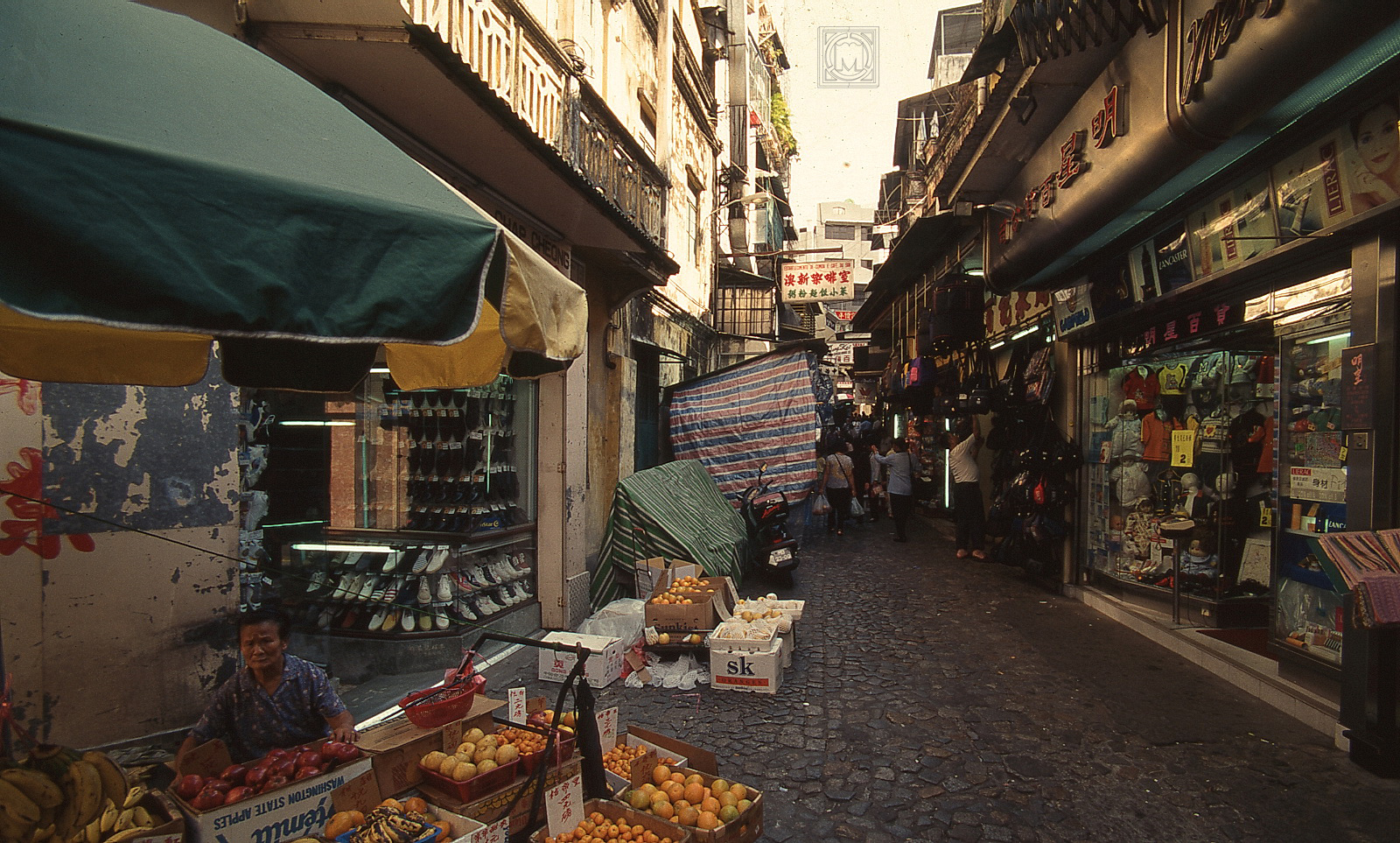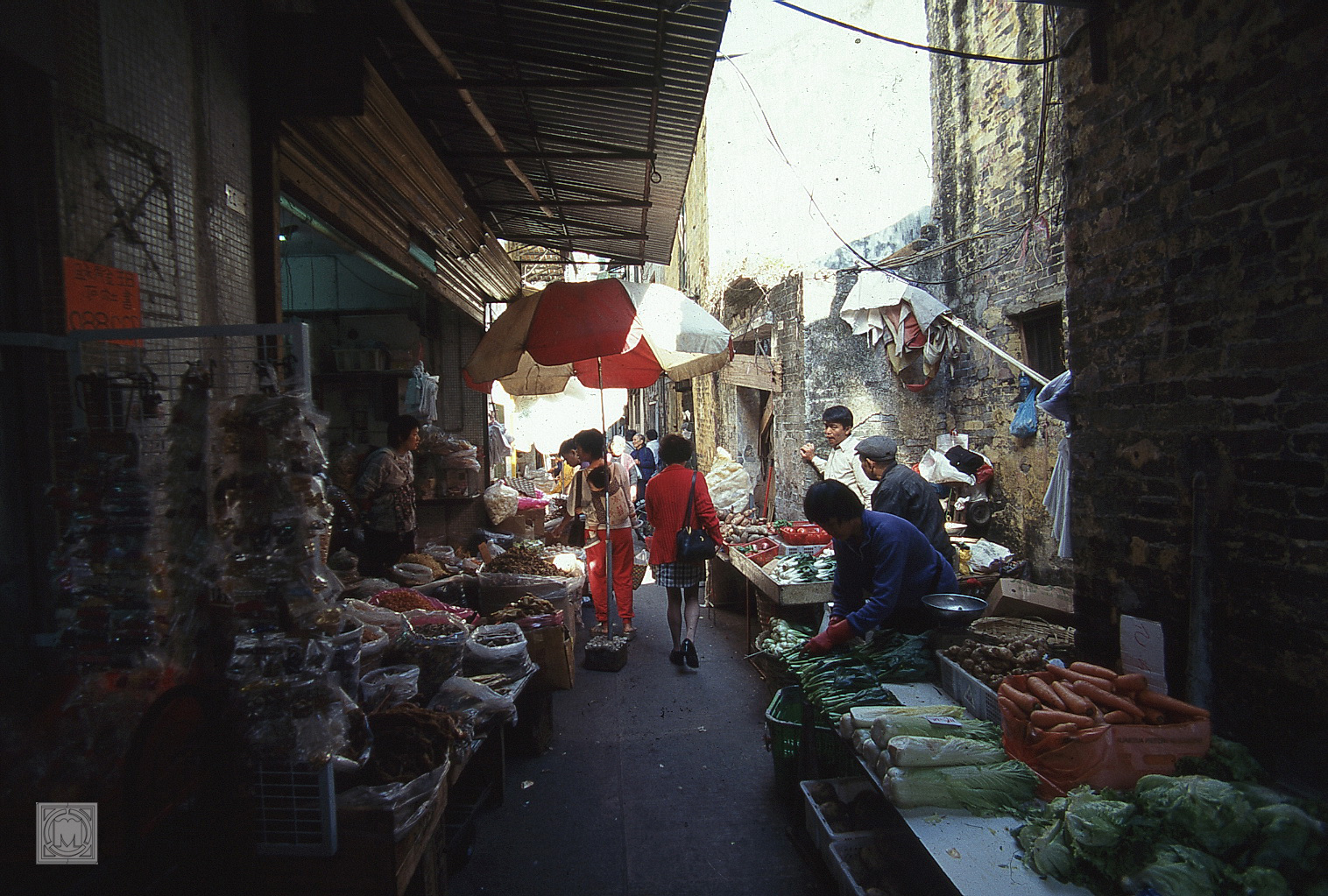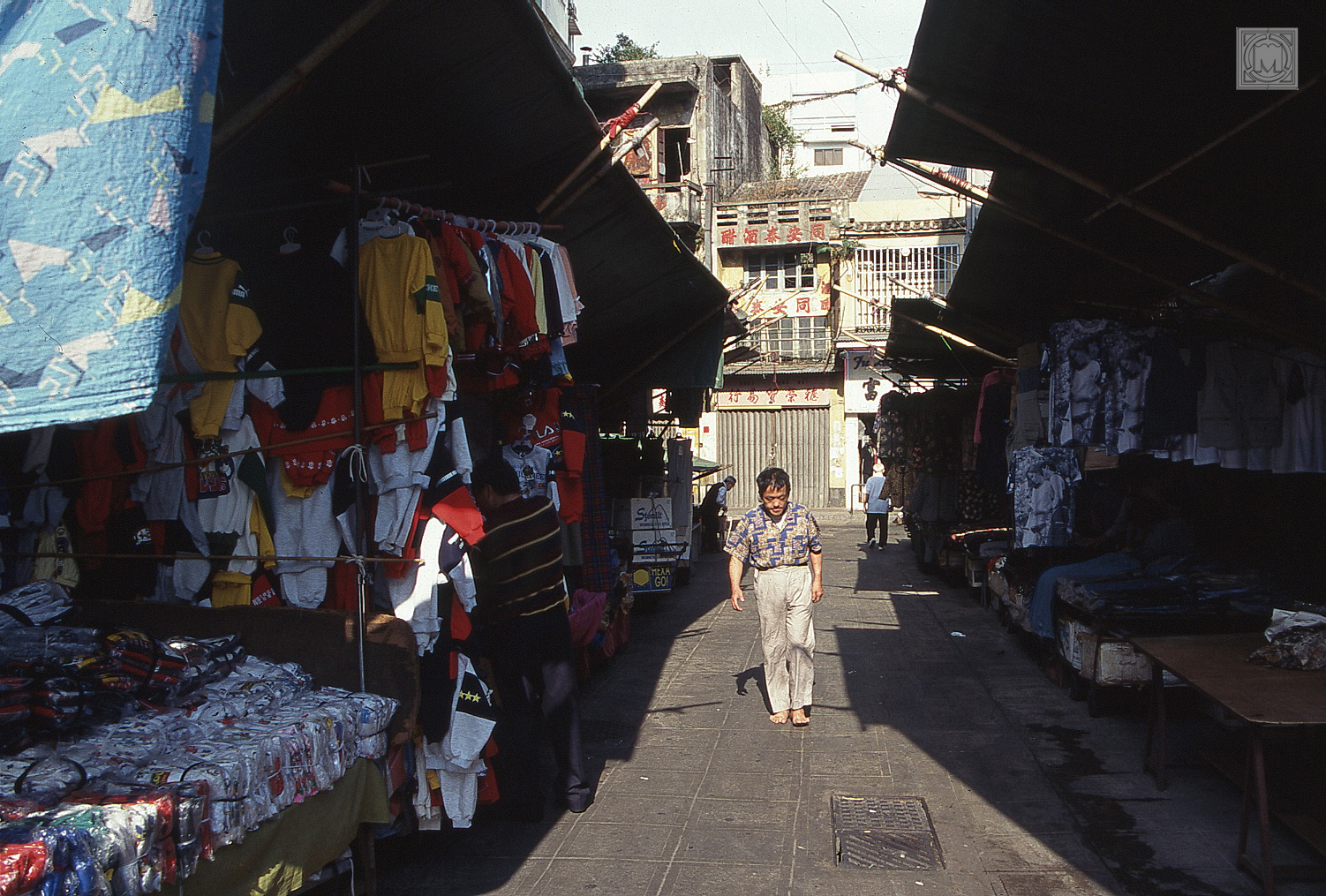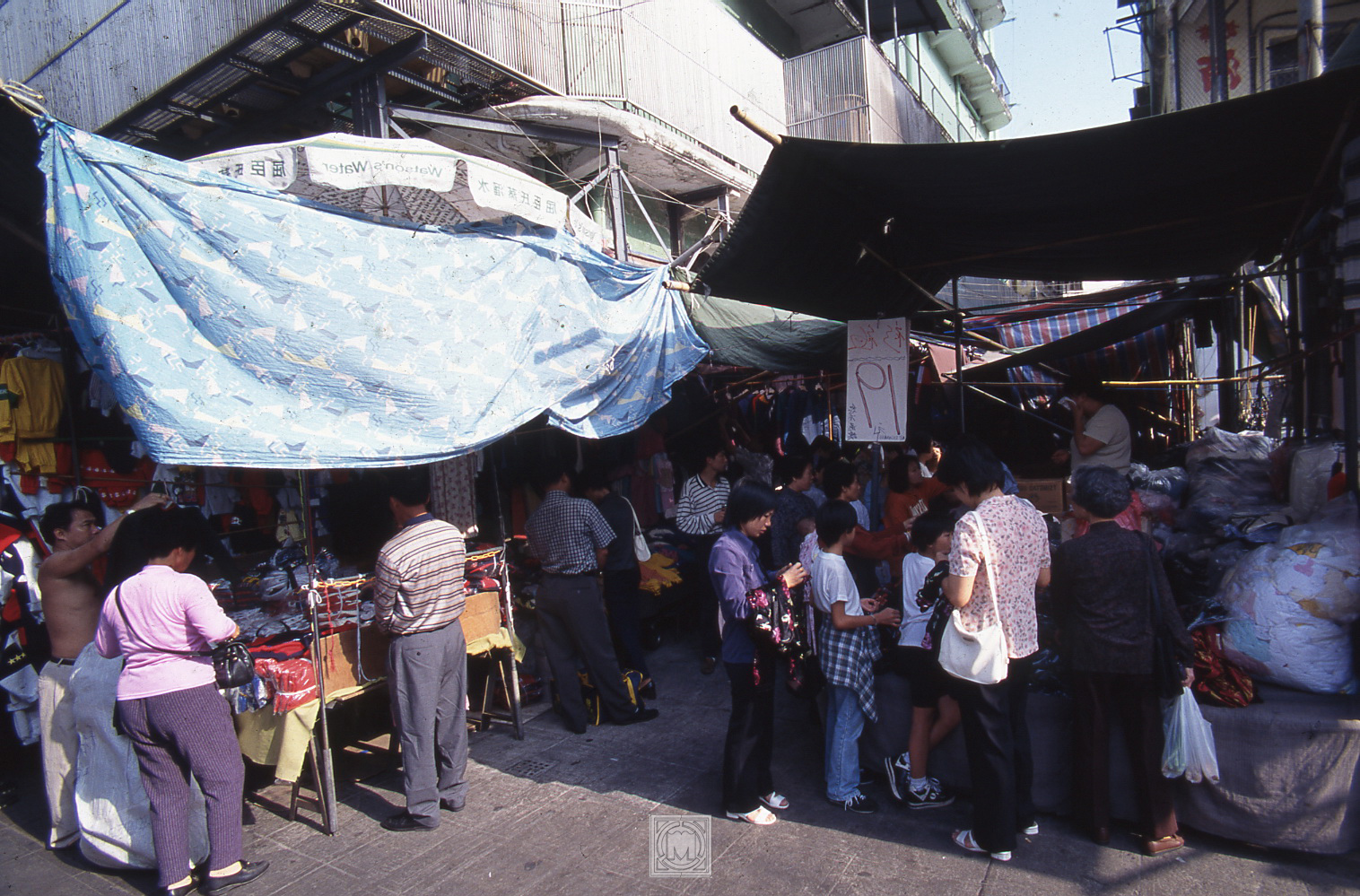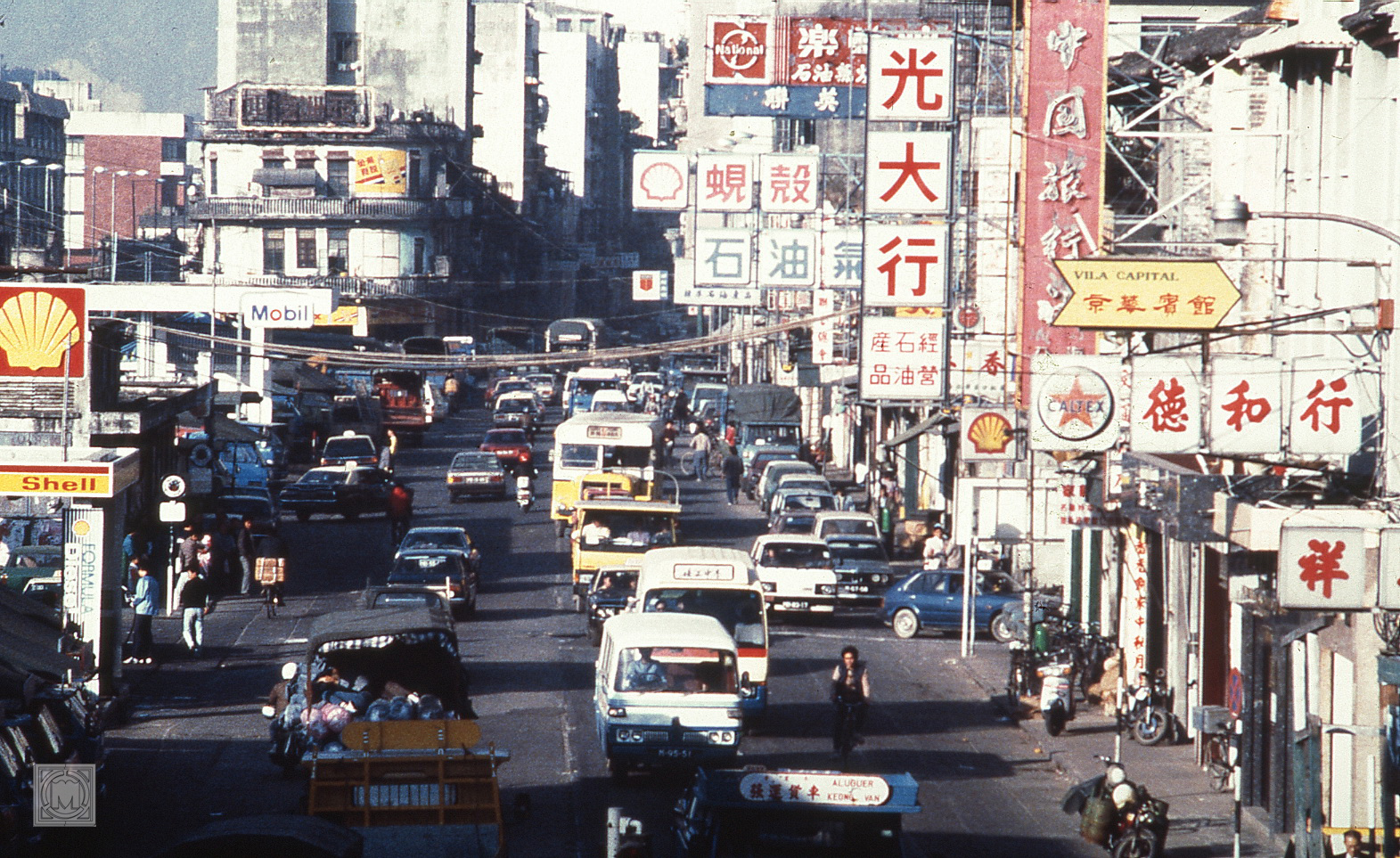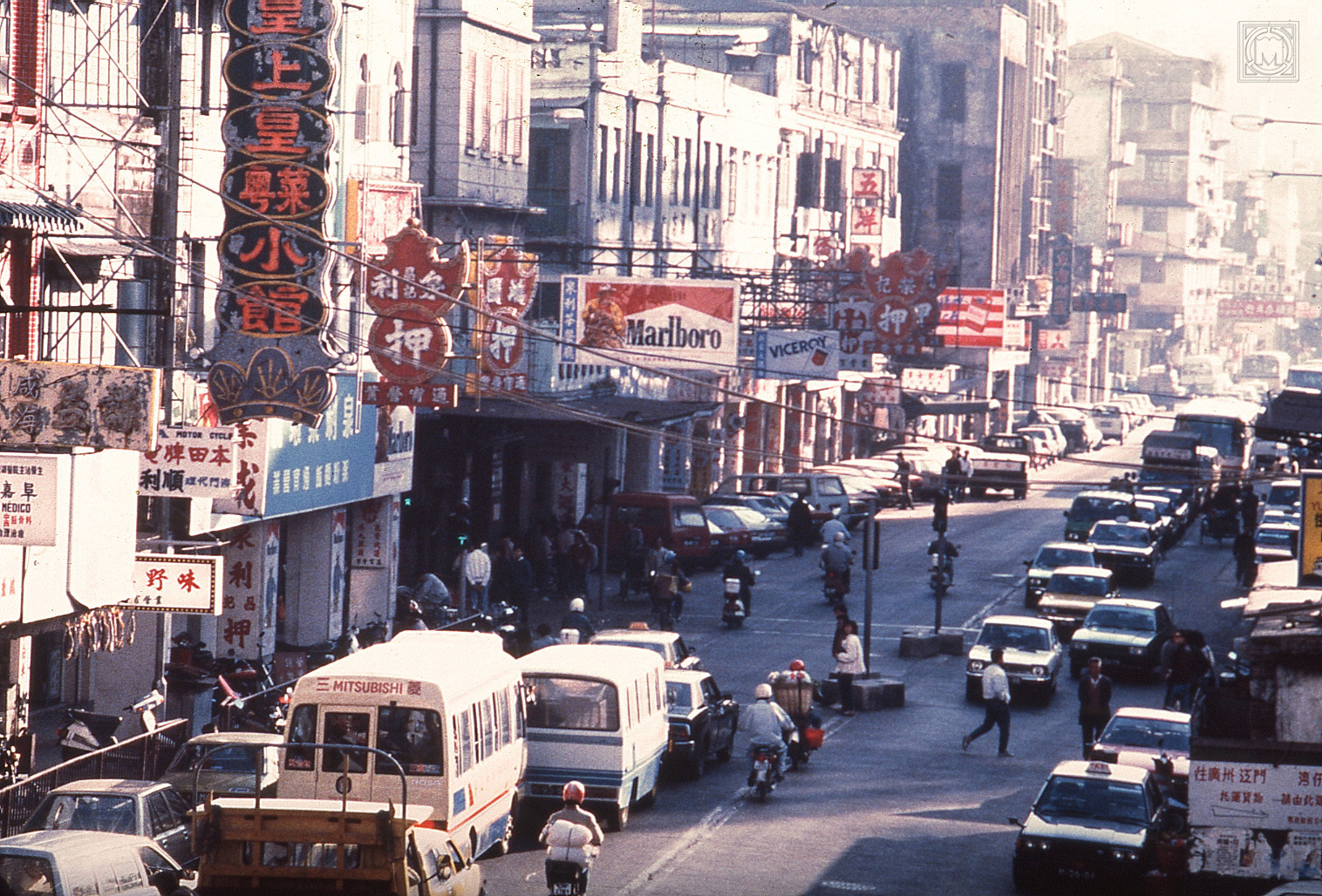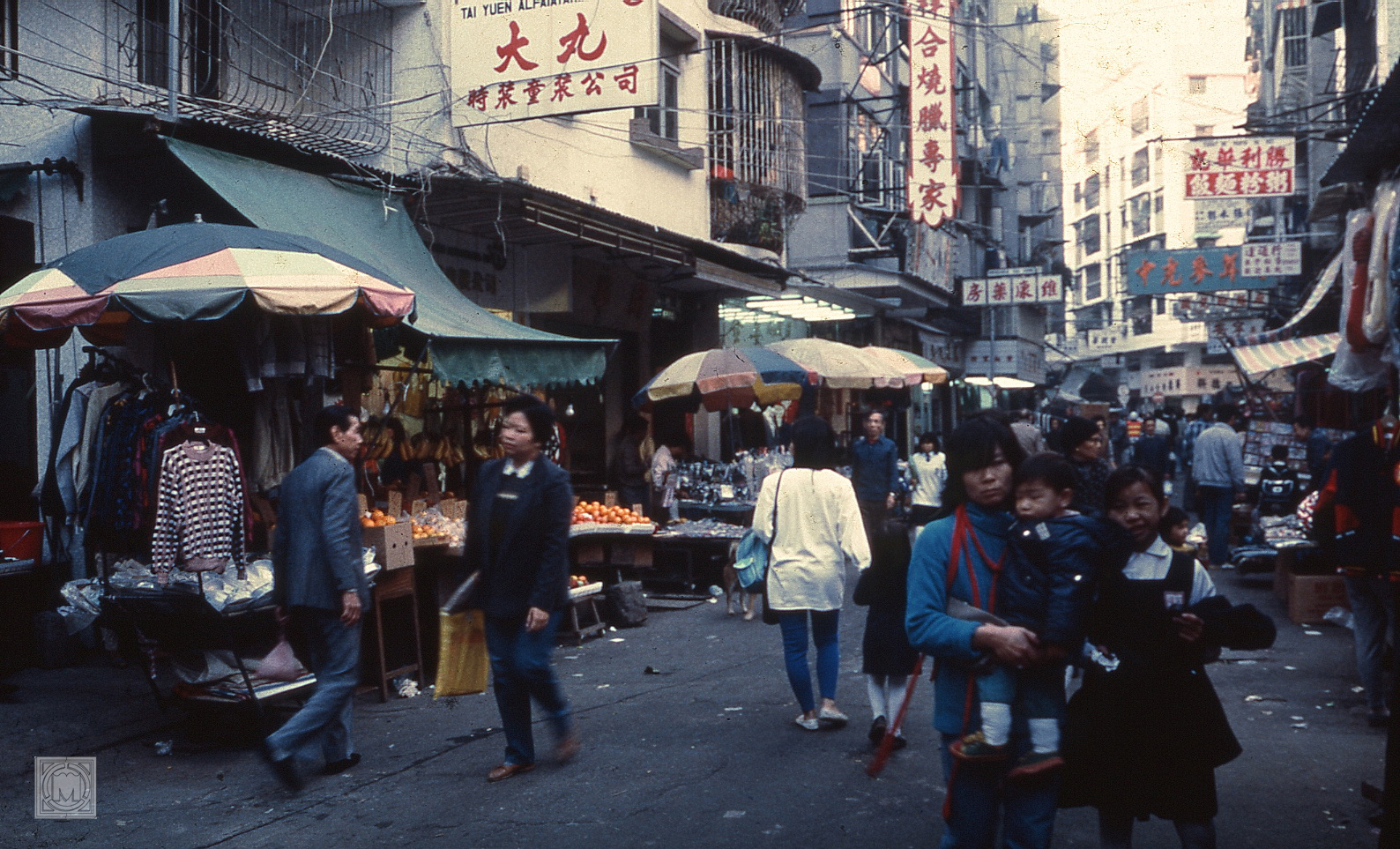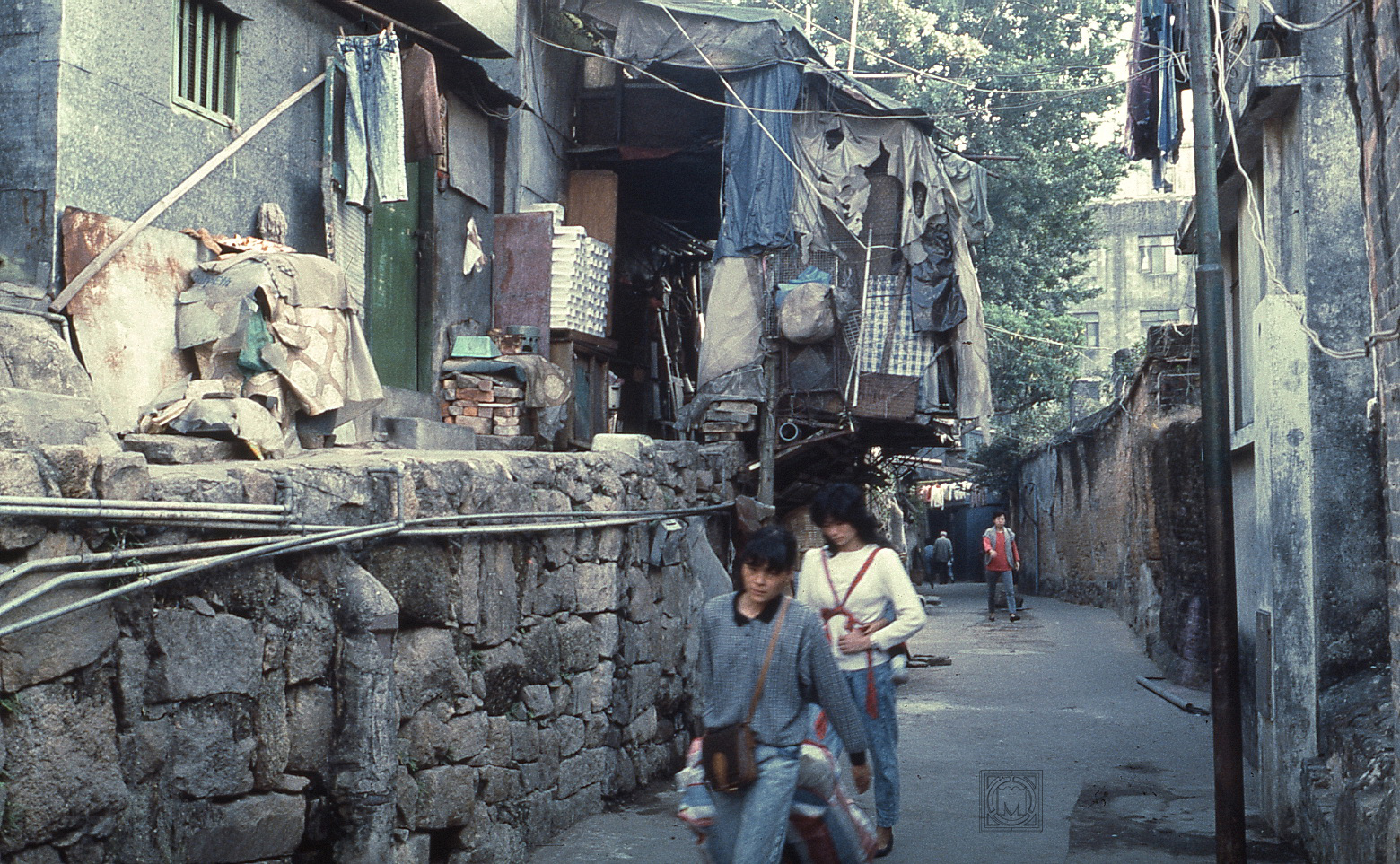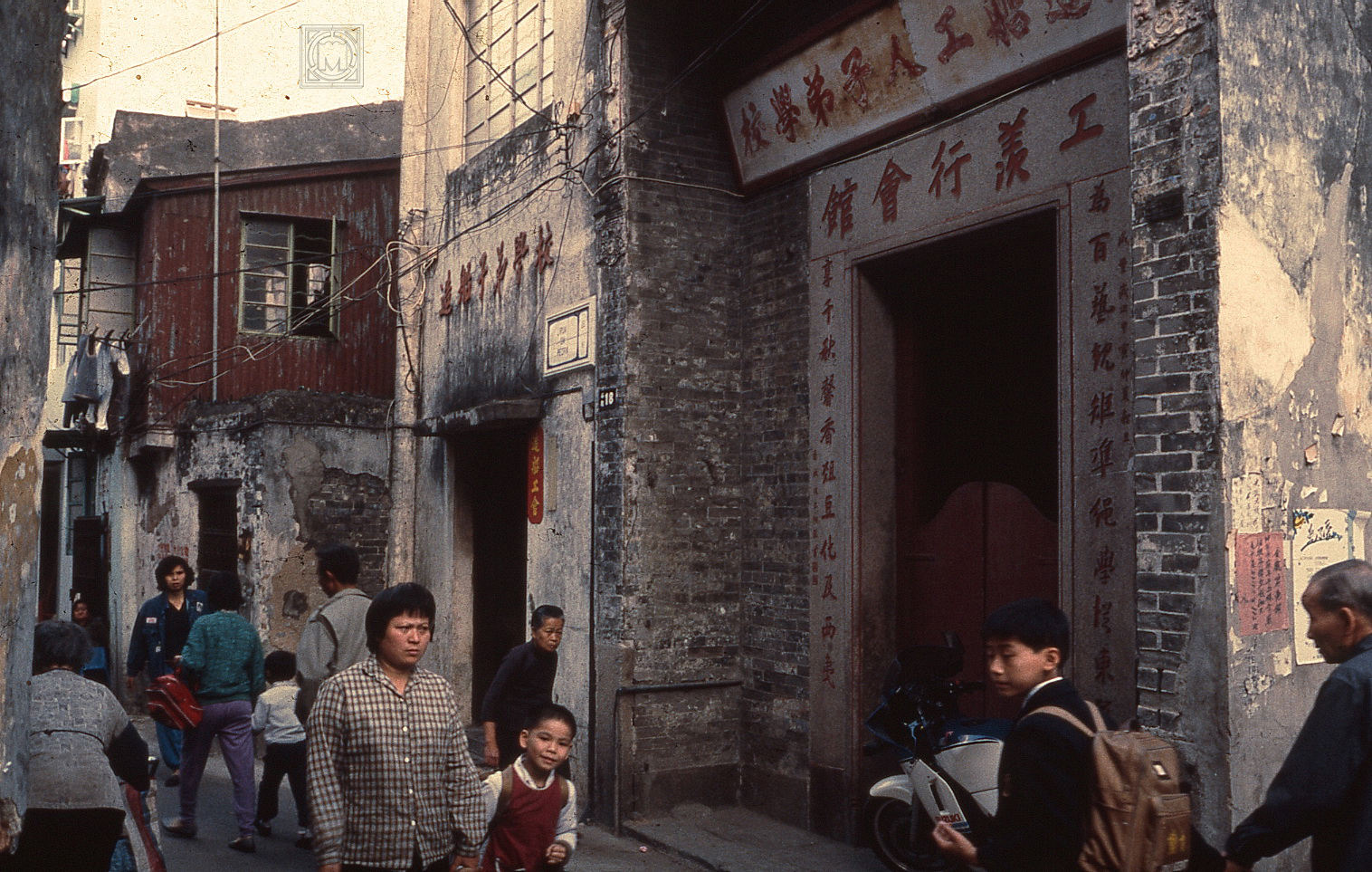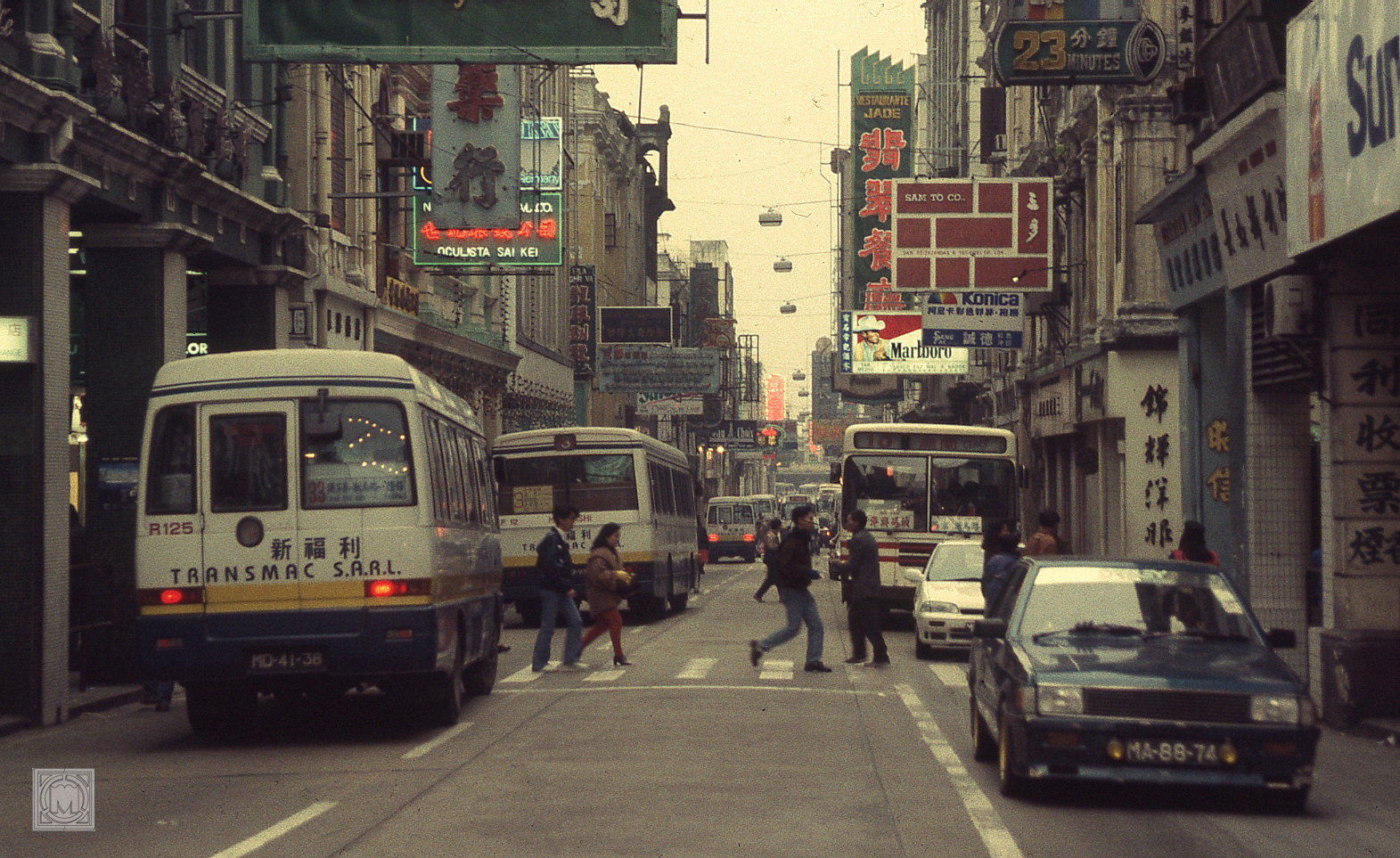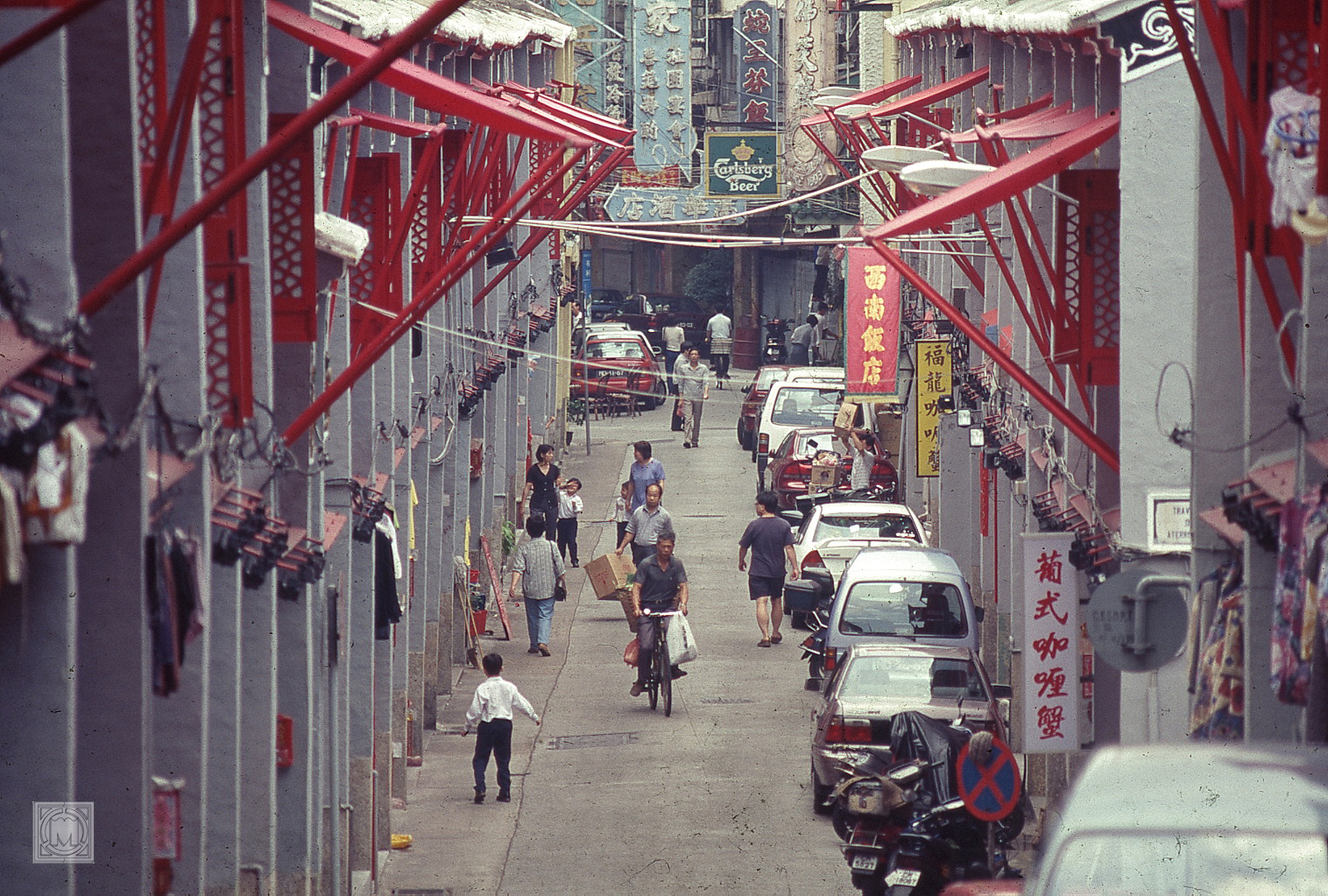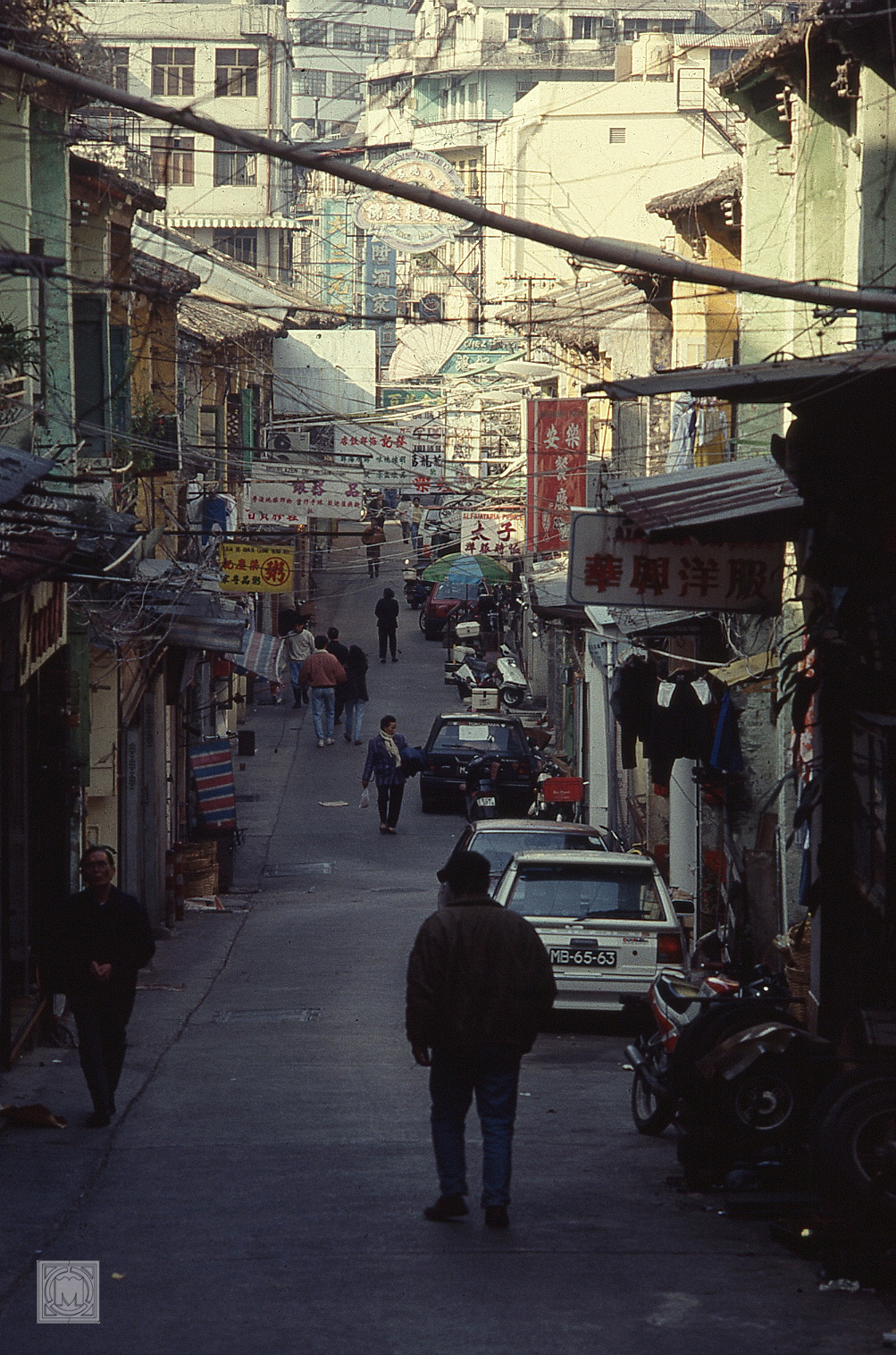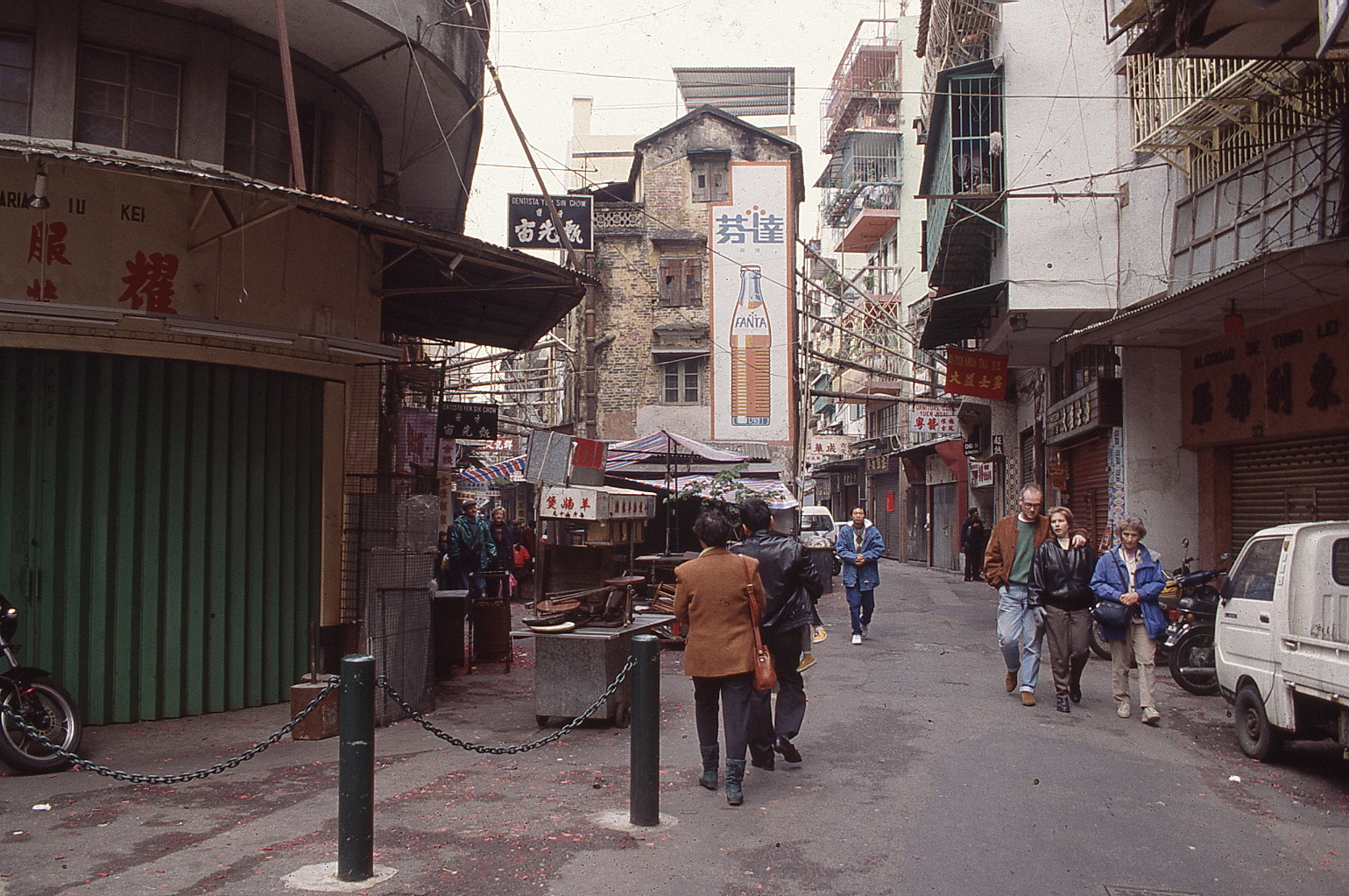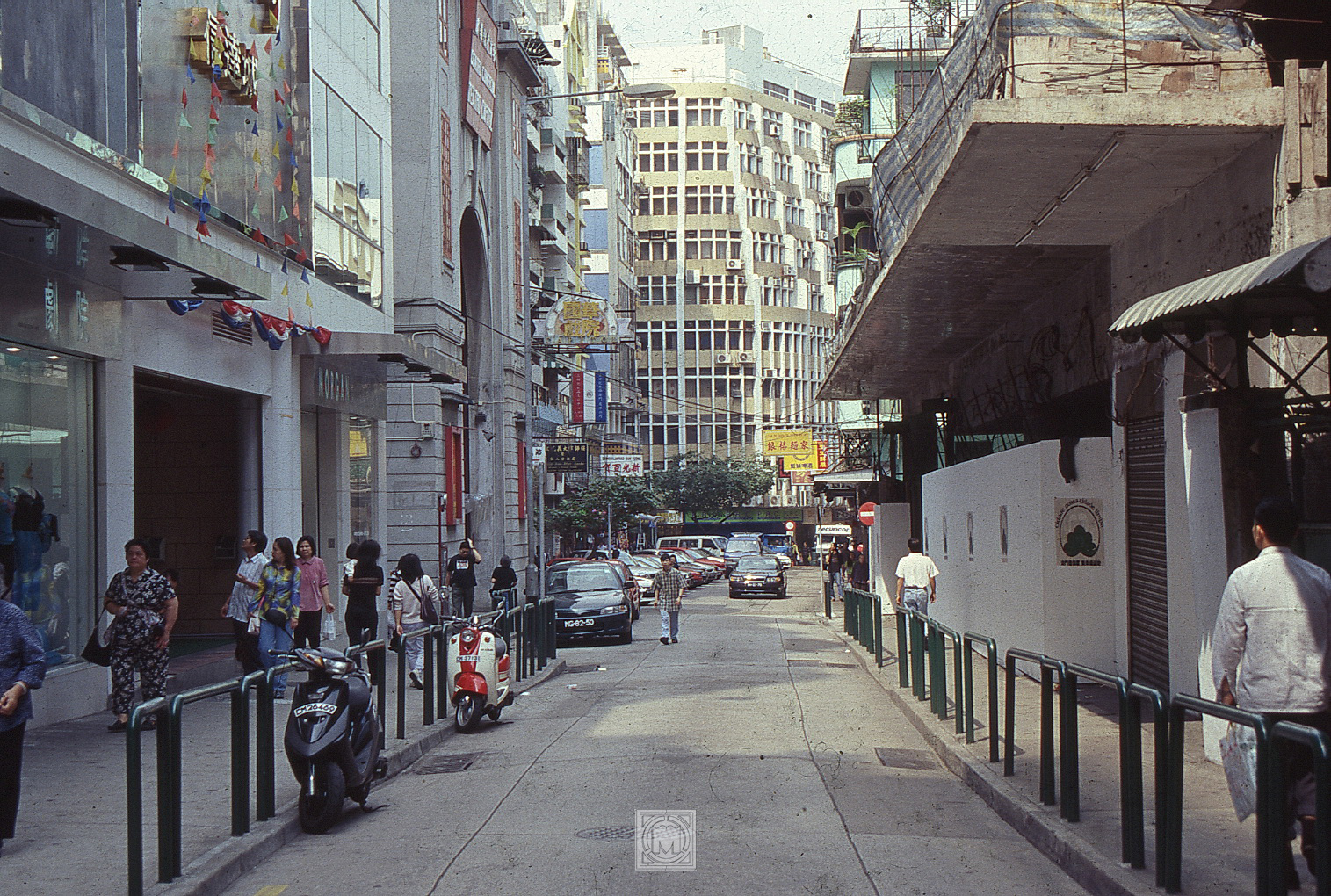Nas fotografias de Raquel Soeiro de Brito percebe-se bem como a vida urbana de Macau estava centrada no Bairro do Bazar, prolongando-se pelo Porto Interior, ao longo da larga Rua do Almirante Sérgio, dominada pelo comércio especializado de artigos de pesca, e pela rectilínea Avenida de Almeida Ribeiro, aberta no início do século XX e marcada pelo ritmo das arcadas dos edifícios de modelo oitocentista e pelas actividades comerciais de maior qualidade e prestígio. É grande o contraste entre o bulício destas áreas e a pobreza das ruas e calçadas encostadas à antiga muralha. Em 1961, a geógrafa regista ainda as últimas imagens do antigo aldeamento chinês de Mong-Há, espaço agrícola recém-sacrificado pela abertura de novas avenidas. Nas imagens dos quatro fotojornalistas do final do século XX representados nesta exposição – Álvaro Tavares, Eduardo Tomé, Cheong Io Tong e Rogério Beltrão Coelho –, as cabaias e os grandes chapéus de palha de ontem são substituídos pelo traje moderno das gentes e os rickshaws não são mais o centro do trânsito. Mas mantém-se muita da ambiência de rua dada pelo comércio tradicional chinês, seja nas lojas, seja nas inúmeras vendas ambulantes.
In Raquel Soeiro de Brito’s photographs, it is visible that the heart of urban life was centered in the Bazaar (Chinese city) and extended to the Inner Harbour, along the wide Almirante Sérgio Street, known for its specialized fishing stores, and the Almeida Ribeiro Avenue, a 20th century linear avenue recognized by the compassed sequence of its arcades and the high-standard commercial activities. There is a remarkable contrast between the hustle and bustle of these areas and the poverty in the streets and sidewalks nearby the old city wall. In 1961, the geographer still records the last images of the former Chinese village of Mong-Ha, an old agricultural area that was being transformed into new avenues. In the photographs taken at the end of the 20th century by Álvaro Tavares, Eduardo Tomé, Cheong Io Tong and Rogério Beltrão Coelho, the old cabaias (changshan) and the big straw hats were replaced by modern clothes. Similarly, the famous rickshaws were no longer the main mean of transport in Macau. But much of the street ambience given by traditional Chinese commerce still remains, whether inside stores or street vending.
在拉克尔·索埃罗·德·布里托(Raquel Soeiro de Brito)的照片中,可以明显看出城市生活以市场(中国城)为中心,并延伸到内港,沿着以专门经营渔业商店的河边新街,以及笔直的新马路。这是一条20世纪初开放,并以其建筑拱廊和高标准的商业活动而闻名的街道。这些地区的繁华与老城墙附近街道和人行道的贫困形成了鲜明的对比。1961年,这位地理学家还记录了昔日古村落–望夏的最后景象,这是一个正在被改造成新街区的古老农业区。在20世纪末,阿尔瓦罗•塔瓦雷斯(Álvaro Tavares)、爱德华多•托梅(Eduardo Tomé)、张耀棠(Cheong Io Tong)和古维杰(Rogério Beltrão Coelho)拍摄的照片中,古老的长衫(cabaias)和大草帽已被现代服装所取代。同样,著名的人力车也不再是澳门的主要交通工具。但中国传统商业的氛围仍然存在,无论是在商店内还是在众多的街头小贩中。

